Join us Saturday for a Pop-up lemonade stand/book sale
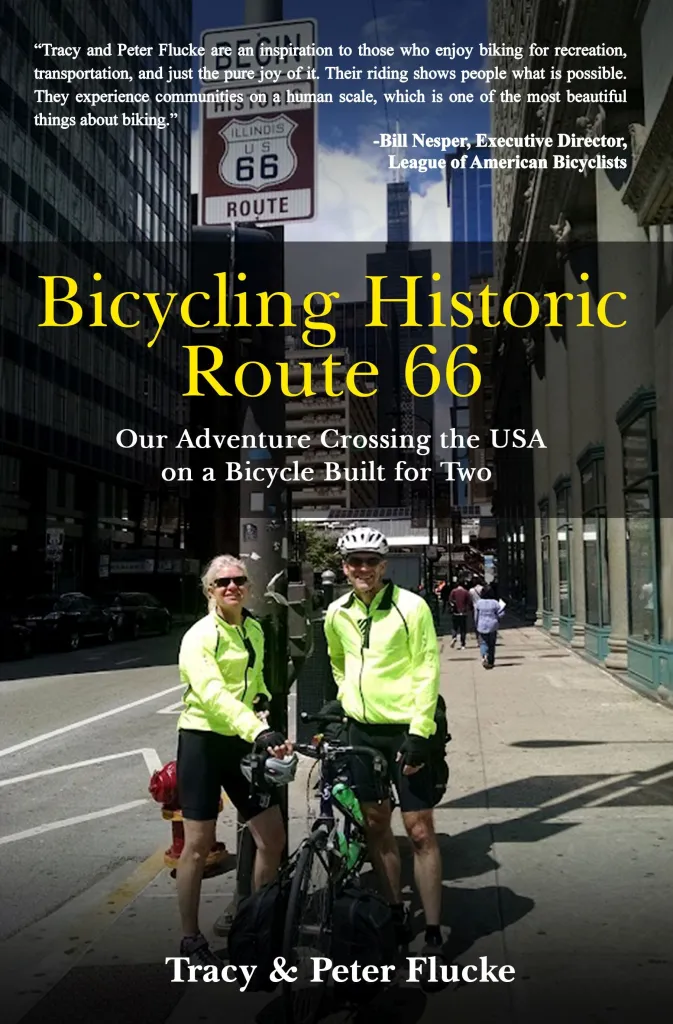

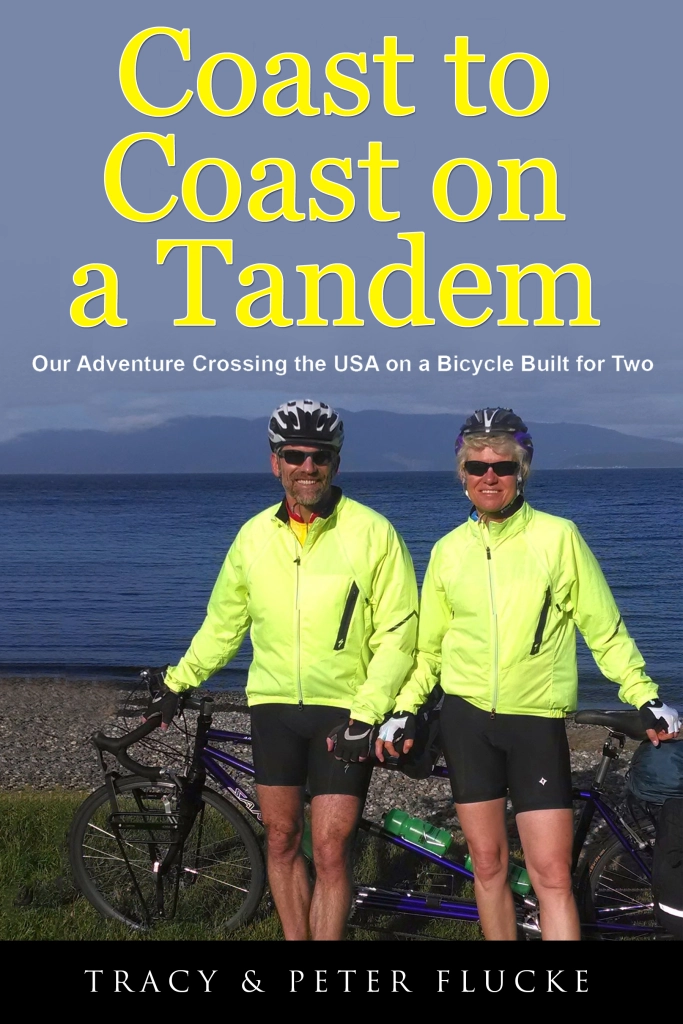
Saturday, September 9, 2023
1144 Hawthorn Rd, Ashwaubenon, WI
10 am – 4 pm
We are having a pop-up lemonade stand/book sale to celebrate the release of our new book,
“Bicycling Historic Route 66,” and you are invited.
Stop by for a FREE glass of lemonade and purchase a signed copy of “Bicycling Historic Route 66,” and/or “Coast to Coast on a Tandem.” We will also have WE BIKE, etc. pint glasses and water bottles available. Books are $20 cash or charge (+ tax).
In honor of Peter’s father, Paul Flucke, who passed away on August 25 at age 87, we will give you a nickel if you walk or bicycle over or do 100 push-ups.
If you cannot join us on Saturday, no worries. Signed copies of both books are available locally from our friends at Badger State Brewing Company, Bosse’s Newsstand, and Lion’s Mouth Bookstore, and through our website (webike.org). Amazon also has them for Kindle readers.
We hope to see you on Saturday.
The Book is Done!
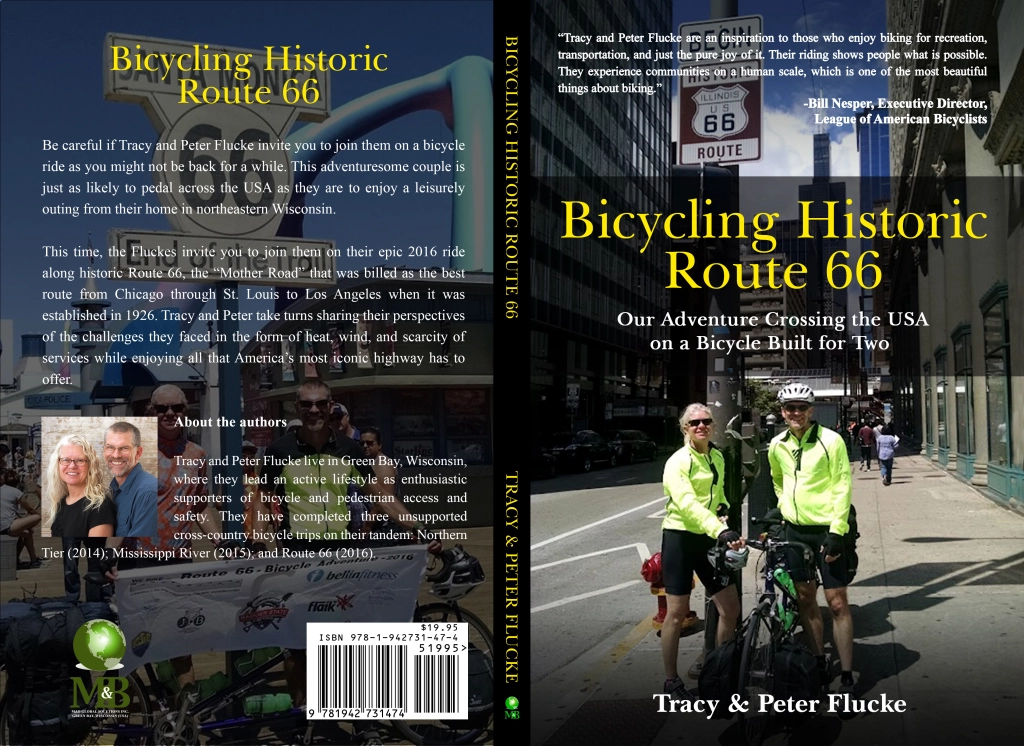
Our new book, “Bicycling Historic Route 66: Our Adventure Crossing the USA on A Bicycle Built for Two,” is finished and off to the printer! We believe our second book compliments our 2017 book, “Coast to Coast on a Tandem,” nicely. Writing this book has been a thirty-week journey full of ups and downs, but just like any good adventure, we are oh so glad we did it. We are very pleased with the result of our efforts, and we think you will be too.
Book release schedule:
September 1 – 4, 2023, Midwest Tandem Rally, Fort Wayne, Indiana
Available now, Amazon, https://amzn.to/45wy7Vs
September 5, 2023, WEBIKE etc. LLC, www.webike.org
When and where to purchase the book
We will be doing a soft book launch and signing event Labor Day weekend at the Midwest Tandem Rally where we will be vendors and presenters. Fingers crossed that the books arrive on time. Don’t worry if you will not be at the rally, there will be plenty of other opportunities to get book(s) including local book signing events, pop-ups, a book launch party, various retail sites, etc.
If you cannot wait to see us in person and want to get your copy sooner, Amazon is ready for orders, and books can be purchased through our website after September 5th.
Update: (Tracy)
There was a flurry of activity this week as final touches were made on the book. Adjustments were made to the trip route map, we signed off on the book dedication page, saw the full-book pdf file for the first time, received the final page and photo count (lots of eye candy), approved the final book cover (so nice), ordered and received the ISBN number and bar code, received promotional materials, completed the final readthrough of the entire book, uploaded the book to Kindle and ordered paperbacks! No wonder Mr. Editor Guy, Peter, and I are tired. Late in the week, Peter went to the gym and out for several rides on his road bike, and I headed to Manitowoc with my sister for a couple of days of rest and relaxation. We have been spending plenty of time together lately. Ha-ha!
Marketing
We ordered and picked up book cover posterboards for display at the Midwest Tandem Rally and are prepping for our one-hour presentation.
Endorsement
“A fast and enjoyable read, Tracy and Peter’s mile-by-mile concerns of weather, water, food, safety, and maintenance remind us of early motorists’ priorities on the young and rugged US Highway 66.”
-Cheryl Eichar Jett, author of “Route 66 in Illinois”
Book Excerpt
“Day 40, July 12 – Chambers to Holbrook, Arizona, 72 miles (total miles – 2,251), Sunny, 89 degrees, 24 mph headwind for last 20 miles
Tracy (Petrified Forest National Park)
We see a rusty old car in a vehicle pullout just north of the I-40 underpass and stop to check it out. The pullout showcases a section of old Route 66 that passed through the park. From the pullout, visitors can view the roadbed and telephone poles that mark the route of the famous ‘Main Street of America.’ The car is a relic 1932 Studebaker.”
-“Bicycling Historic Route 66”
Things you Learn when Writing a Book
Writing a book, even your second (“Bicycling Historic Route 66”) is a learning experience if nothing else.
Here are a few things we have learned, or confirmed, while writing this book:
-Tracy is a much faster reader than Peter.
-Tracy is our empath and Peter is our tech/detail guy.
– Mr. Editor Guy:
-Will not let you start every sentence with a prepositional phrase.
-Will not allow you to use three exclamation marks at the end of a sentence. Ever!!!
-Always has a reason for his edits, but if he doesn’t, he will admit it.
-Is willing to make changes at any stage of book development if they make sense!
-Three dedicated individuals can edit better than one.
-The difference between mph and MPH, when to use, or not to use, hyphens, etc.
-Book writing ALWAYS takes longer and it is harder than you think it will be.
Book Writing Update:
This week we reviewed and approved the book design for the Preface, Introduction, Chapter 8 – State of Arizona (another long one), and Chapter 9 – State of California (a short one). We completed and approved the Acknowledgements, decided to nix the About the Author section (because it is pretty much covered in the Preface), and completed our Dedications. We also approved the back cover picture, narrative, and endorsement.
We are getting close to being finished and are still hopeful we will have books for a soft book launch at the Midwest Tandem Rally in Fort Wayne, Indiana over Labor Day weekend. It will be close! Special thanks to Mr. Editor Guy for all his hard work and long hours to try and meet our timeline.
Endorsements:
“Tracy and Peter Flucke are an inspiration to those who enjoy biking for recreation, transportation, and just the pure joy of it. Their riding shows people what is possible. They experience communities on a human scale, which is one of the most beautiful things about biking.”
-Bill Nesper, Executive Director, League of American Bicyclists
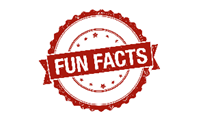
Painted Desert Inn/ Petrified Forest National Park
“In its almost 100 years overlooking the Painted Desert, the inn has undergone many changes. The original building from the early 1920s was made of petrified wood. Today’s adobe facade dates to the 1930s renovation of the Painted Desert Inn.
The national historic landmark functions only as a museum now, with no overnight accommodation and food service. Displays inside highlight the building’s history, Route 66, and the Civilian Conservation Corps. There are also restored murals by Hopi artist Fred Kabotie.” https://www.nps.gov/pefo/learn/historyculture/pdi.htm
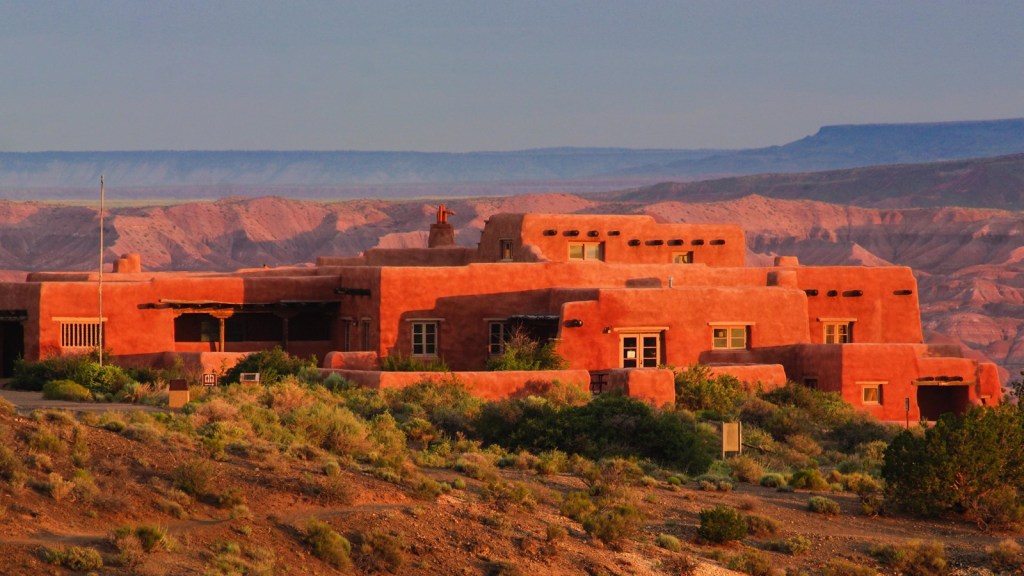
Editor’s Choice
Writing a book is an incredibly personal experience, and this may be even more true with a true-life adventure like our current project, “Bicycling Historic Route 66: Our Adventure Crossing the USA on a Bicycle Built for Two.” Because of this, having an editor/publisher who you respect, and trust is an absolute must. Our books would not be what they are without him!
A common saying among tandem bicycle riders is, “Whichever way your relationship is going, it will get there more quickly on a tandem.” Unless you have tried to ride one with your life partner, you have no idea how true this is.
Our first unsupported, cross-country tandem ride was along the Adventure Cycling Association’s Northern Tier route from Washington State to Maine (4,362 miles, 72 days) in 2014. Going into the trip we knew it would be a challenge physical and mental, but we had no idea how much it would test our relationship. By the time we reached the Adirondack Mountains in northeastern New York State, we were completely done with each other. Even though we had a gorgeous cabin on the Goodnow flowage all to ourselves, we barely talked for the first twenty-four hours we were there and slept in separate bedrooms that night. It was one of the most difficult times we have experienced in our, now, thirty-five years of marriage. When we were able to talk again, we discovered that under all of the stress and strain of the trip, and even though we were riding the same bike only six inches apart, we had grown apart. Instead of building each other up, we were tearing each other down in our individual efforts to survive what had become an ordeal. (See our book, “Coast to Coast on a Tandem.”)
We generally write each part, each day, of our books together. While one takes the lead, from our small home office with our desks only inches apart, we always share ideas and edits. That cabin in the woods part of our Northern Tier book we wrote individually and sent straight to our editor, it was still too painful to discuss. We never looked at it again until we read it in the completed book. Now that is trust!
Book Writing Update
Friday morning my phone rang and I saw that it was our editor.
“What’s up?” I said.
“You idiot, you forgot to end the book,” he says.
“What are you talking about?” I responded in a panic. (Is that possible? We have had so much on our plates lately. Maybe we did forget to write it. No, there’s no way.)
“You went right from leaving Arizona to the epilogue,” he continues.
“Did you get Chapter 9?” I asked.
“Wait, what? He say’s questioningly. “Let me check really quick, I have been really busy and I might not have looked at it yet. Oh, here it is.” Silence.
I wanted to say, “Now who’s the idiot?” but I was so relieved that all I said was, “Oh, good.” And we both laughed. Then I put the phone on speaker and made him tell Tracy what he did.
This week we reviewed and approved Chapter 7 – State of New Mexico book design and reviewed edits for Chapter 9 – State of California (the last one!) and will get any corrections/changes to Mr. Editor Guy soon. We also picked potential pictures for the introduction and epilogue and sent them to him.
The book includes Facebook comments from our followers, and we backtracked to previous Chapters this week to make sure everyone was properly identified. This can get confusing.
Book endorsements keep coming in. We are so moved by the kind words and the number of people who have taken the time to write one for us.
“Bicycling Historic Route 66 is more than just a travelogue; it’s a journey of discovery that educates and entertains in equal measure. Tracy and Peter Flucke’s adventure along the iconic Route 66 is filled with rich historical context, fascinating insights, and humorous anecdotes that make learning a joy. A must-read for adventurers, history buffs, and lifelong learners alike.”
-Nick Burgraff, PhD, cycling enthusiast and physiologist
(Host of the Neuro Network podcast, https://rss.com/podcasts/neuronetwork/)
Marketing:
Radio Interview with Up North News
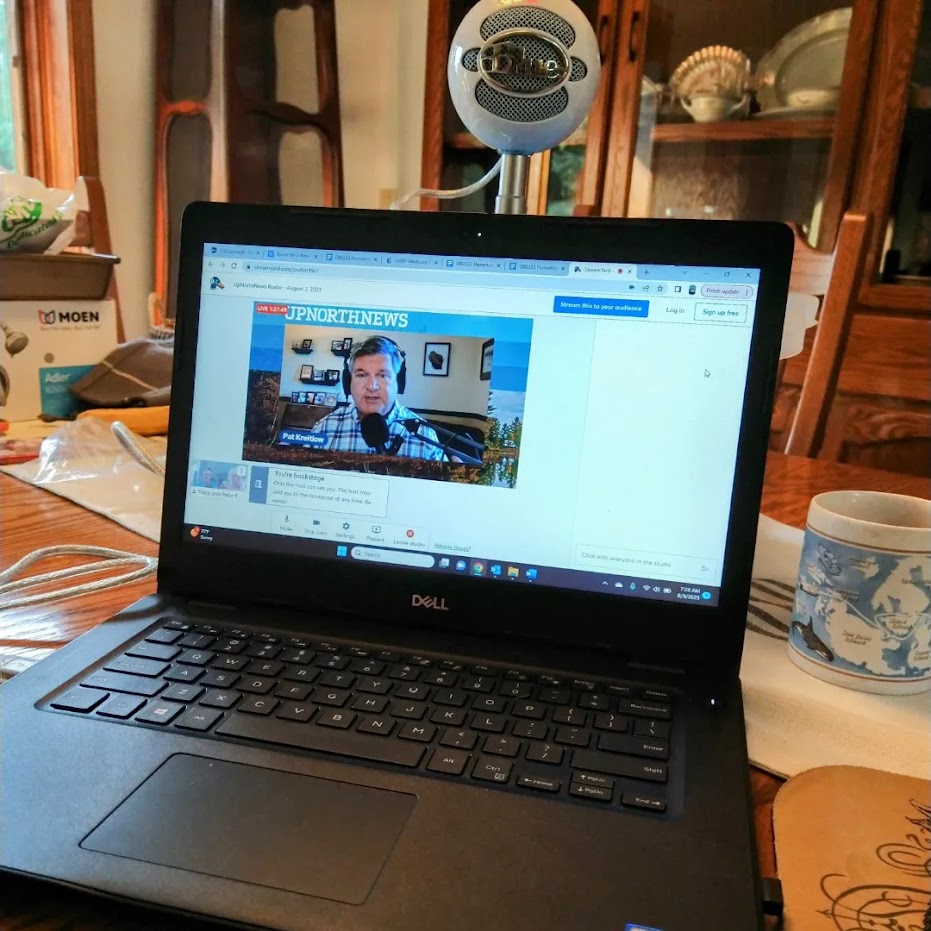
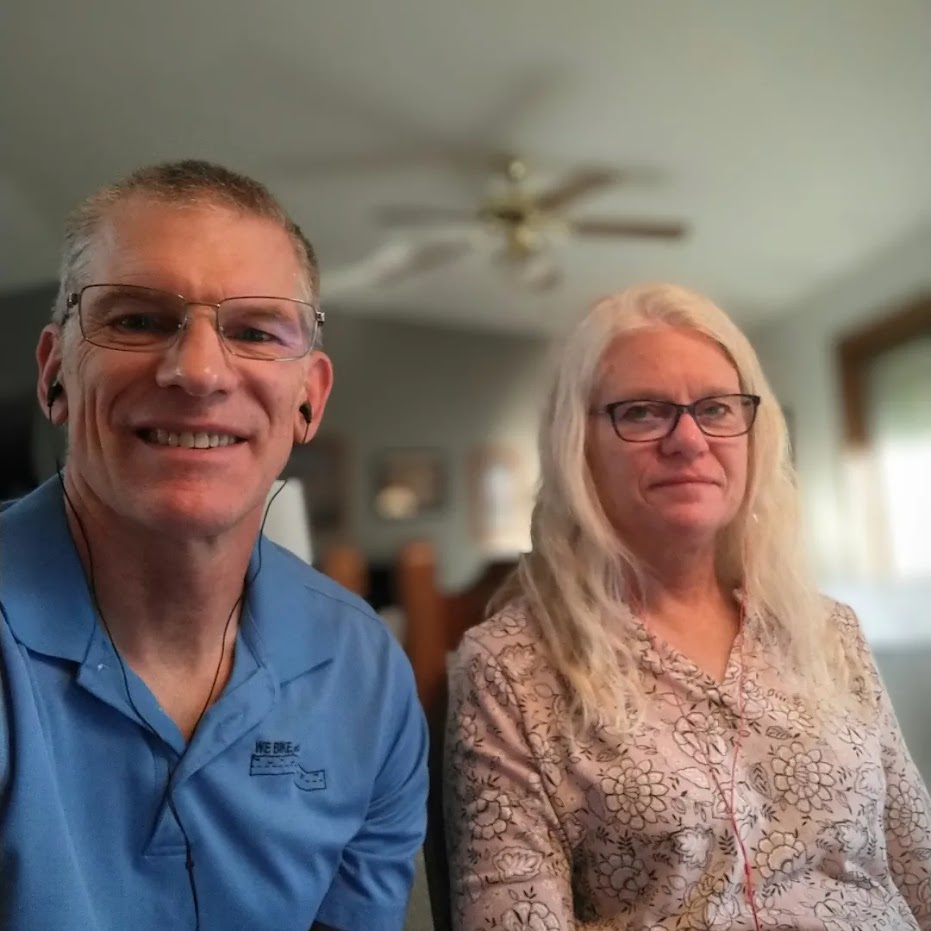
We were guests on Up North News with Pat Kreitlow and our friend Dr. Kristin Lyerly Thursday morning.
“Guests: Kristin Lyerly, Tracy Flucke, Peter Flucke
“This week’s Hometown Health segment looks at the benefits of bikes. The urban planners of the 20th century wrote their blueprints around the needs of the automobile. Today’s communities are embracing pedestrian areas, bike paths, green space—and it’s not just good for the air but for community health.”
Here are the links:
podcast: https://civicmedia.us/…/the-healthy-kinds-of-biker…/ (Our segment starts at 20:42)
Facebook: https://www.facebook.com/UpNorthNewsWI/videos/6394747770595065
Newspaper Article
Also, a reporter from The Business News reached out about doing an article and video as part of their “People Who Make a Difference” feature. We will meet with the videographer next week Thursday and the reporter soon.
Independent Book Store
Finally, we stopped in at the Lion’s Mouth bookstore in downtown Green Bay to visit their amazing staff and our book (“Coast to Coast on a Tandem”). They have agreed to carry our second book and will host a meet the authors/book signing event this fall. Thank you, Lion’s Mouth.

“The Mojave Desert occupies a significant portion of Southern California and parts of Utah, Nevada, and Arizona. Named after the Mojave Native Americans it occupies roughly 54,000 square miles in a typical Basin and Range topography. The Mojave Desert receives less than 6 inches of rain a year and is generally between 3,000 and 6,000 feet in elevation. The Mojave Desert also contains the Mojave National Preserve, Joshua Tree National Park and the lowest-hottest place in North America: Death Valley, where the temperature can approach 120F in late July and early August. High winds, often above 50 miles per hour, are also a weather factor and occur frequently along the western end of the Mojave and are less common toward the east.” https://mojavedesert.net/
Oh, So Close!
Book-writing Update
Book writing, like bicycle touring, or any long journey for that matter, can be tough at times. This is particularly true near the end, just before you get the adrenalin rush (hopefully) when you can see the finish line. And so, here we are. But we are cruising now!
This week we reviewed edits for Chapter 8 – State of Arizona and the Introduction. Chapter 9, our last chapter is off to our editor. Upon return of the Introduction for our review, Mr. Editor Guy told us “Good job on this, you guys. This is exactly what you needed to do here.” High praise from the guy we pay to fix our mistakes. We are spending a lot of time now wordsmithing to make the book more readable and revisiting many of the early chapters as we can finally see the whole as a sum of the parts. Although we are both exhausted, this phase of the project is very gratifying.
Our youngest daughter, Alex(andra), was visiting from south Texas last week and was working remotely while we were working from our home office. More than once, Alex said, “Do you guys work all the time?” No, Alex, it just seems like it lately. When it’s your book it is hard to do anything other than your absolute best.
The book will include several dozen photographs. As they say, “a picture is worth a thousand words.” While many of the pictures are of us and the sights we saw, some include pictures of other people. To use pictures of others in the book we need to secure written permission. This week we have been reaching out to these people to get it. We have not received a no yet!
Peter is tackling the last section of the book – the epilogue. An epilogue is a literary device that functions as a supplemental, but separate, part of the main story. It is often used to reveal the fates of the characters in a story and wrap up any loose ends. Ours begins with recovery days in California with Rick, our journey by train home, making new friends on the train, returning to Green Bay, and bicycling and life experiences after our return. Our lives are definitely not boring!
Endorsements
We reached out for an endorsement from Fran Houser, an amazing woman we met on our bicycle trip. Fran was the owner of the Sunflower Station in Adrian, Texas and the model for “Flo” one of the cars in the 2006 Cars movie. We only spent about an hour with her on our trip, but the connection was immediate, and she continues to follow us and comment on our Facebook posts.
Fran happily agreed to endorse our book and allow us to use this great picture of her and Tracy in the book.
Fran is now living in Amarillo, Texas (near the Cadillac Ranch). She will turn 80 shortly and has fond memories of our visit. It was so fun to catch up with her, she is still so full of life!
Videos:

Santa Fe Trail – A Brief History
“Between 1821 and 1880, the Santa Fe Trail was primarily a commercial highway connecting Missouri and Santa Fe, New Mexico. The route was pioneered by Missouri trader William Becknell, … Not surprisingly, others got into the trade soon after Becknell, and by 1825 goods from Missouri were not only being traded in Santa Fe, but to other points farther south as well.
From 1821 until 1846, the Santa Fe Trail was a two-way international commercial highway used by both Mexican and American traders. Then, in 1846, the Mexican-American War began… After the Treaty of Guadalupe Hidalgo ended the war in 1848, the Santa Fe Trail became a national road connecting the more settled parts of the United States to the new southwest territories. Commercial freighting along the trail boomed to unheard-of levels, … The trail was also used by stagecoach lines, thousands of gold seekers heading to the California and Colorado gold fields, adventurers, missionaries, wealthy New Mexican families, and emigrants.
In 1866, just a year after the Civil War ended, an unprecedented period of railroad expansion began in the new state of Kansas… by 1873, two different rail lines reached from eastern Kansas all the way into Colorado. … the Atchison, Topeka, and Santa Fe Railroad, reached the top of Raton Pass (at the Colorado-New Mexico border) in late 1878… Then, in February 1880, the railroad reached Santa Fe, and the trail faded into history.” (https://www.nps.gov/safe/learn/historyculture/index.htm)
We are done (well, almost)!
Book writing update:
This week we completed rough drafts of the last two chapters of our upcoming book, “Bicycling Historic Route 66,” Chapter 8 – State of Arizona, and Chapter 9 – State of California. The trip across the Mojave Desert was daunting. It feels so good to be done with the trip narrative and to have sent it off to our editor. Ironically, the writing of the final days of the trip have coincided almost perfectly with the actual dates of the trip, July 11-21, 2016. Our Facebook memories have been showing us pictures from the trip and it has been a good motivator to keep pushing.
Mr. Editor Guy has been really busy lately finishing another book, so we have been trying to give him some space. Although, we have been a bit concerned about the timing for completing the book. Our hope is to have it printed for the Midwest Tandem Rally, which is Labor Day weekend (forty days from today).
After many delays on our part (trips, home remodeling, etc.), we now have an aggressive timeline for finishing the book, but we did not know if our editor/publisher could keep up. Recently, however, we have noticed increasing activity in our shared book folders. We all finally had a chance to talk earlier this week, and he is almost done with his other book. Yes! Now, it is full steam ahead to the end. We hope we can keep up!
The book design for Chapter 5 – State of Oklahoma and Chapter 6 – State of Texas are also complete! Now we are rocking.
Marketing:
Endorsements for the book are rolling in and we have started adding “Advance praise for Bicycling Historic Route 66” to our weekly social media lineup.
“Two gritty athletes give us a peek behind the curtain to see what it would be like to pedal great swaths of the country on a tandem bike. Along the way, we come to realize how unassuming and friendly they really are, which helps resolve one of the great mysteries of the book: how they manage to stay married through it all.”
-Steve Horrell, retired reporter for the Edwardsville (IL) Intelligencer
This should complement our fun facts and this blog nicely. It has been fun to watch our following for these offerings grow over the past eight months. Wow, we have been working on this thing for a while.
We will be venders and presenters at the Midwest Tandem Rally (MWTR) in Fort Wayne, Indiana Labor Day weekend. This is a great way to market our books, and to a target audience, fellow tandem riders! We have been venders at the past two MWTR Rallies and book sales have been brisk.

The Grand Canyon Hotel, Williams, Arizona
“The Grand Canyon Hotel opened its doors in January 1891 and is the oldest hotel in Arizona. Williams was a logging, ranching, mining, and fur-trapping town. In 1905 the Santa Fe railroad opened a spur up to the Grand Canyon, making Williams “The Gate Way to the Grand Canyon.” The Grand Canyon Hotel was the only hotel close to the Grand Canyon at the time.
It is a European-style hotel… … (In) the guest registers from 1904, … are such famous guests as General Pershing (who was a Captain at the time) and The Vanderbilts. The King of Siam and John Muir (founder of the Sierra Club) stayed here 4 times. Other guests from the ‘40s and ’50s reveal the rooms were rented more than once the same night (Ummm).
The hotel closed about 1970 after interstate 40 bypassed Williams and sat empty for 35 years. New owners purchased the hotel in 2004 and started the complete remodel, re-opening for business in June of 2005. Including all new electricity and plumbing.
The Grand Canyon Hotel is located in the center of Williams at the crossroads of Route 66 and Second street.” https://thegrandcanyonhotel.com/history/
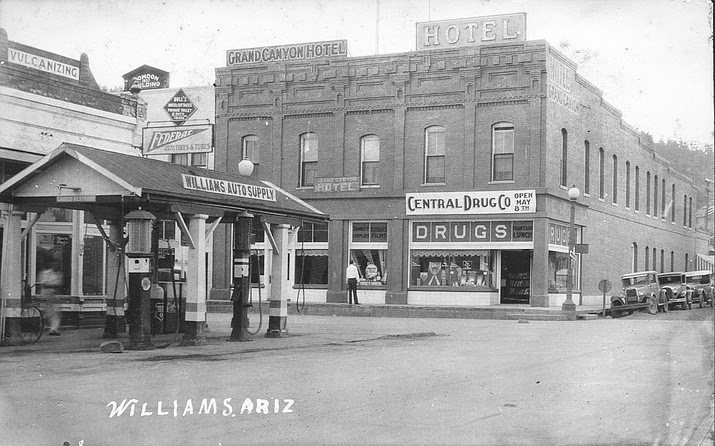
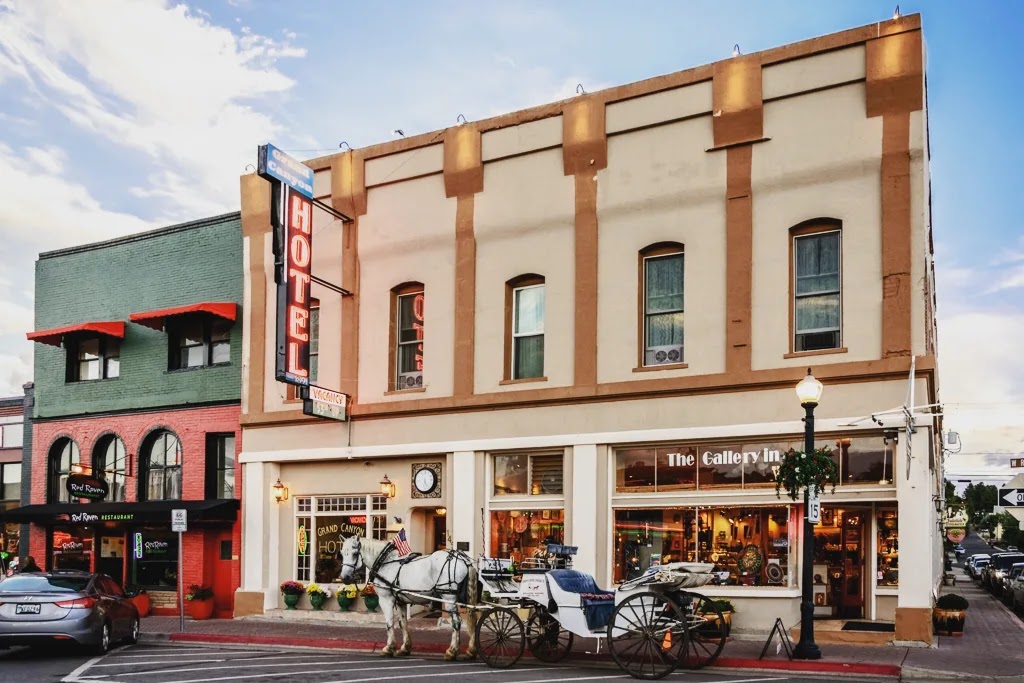
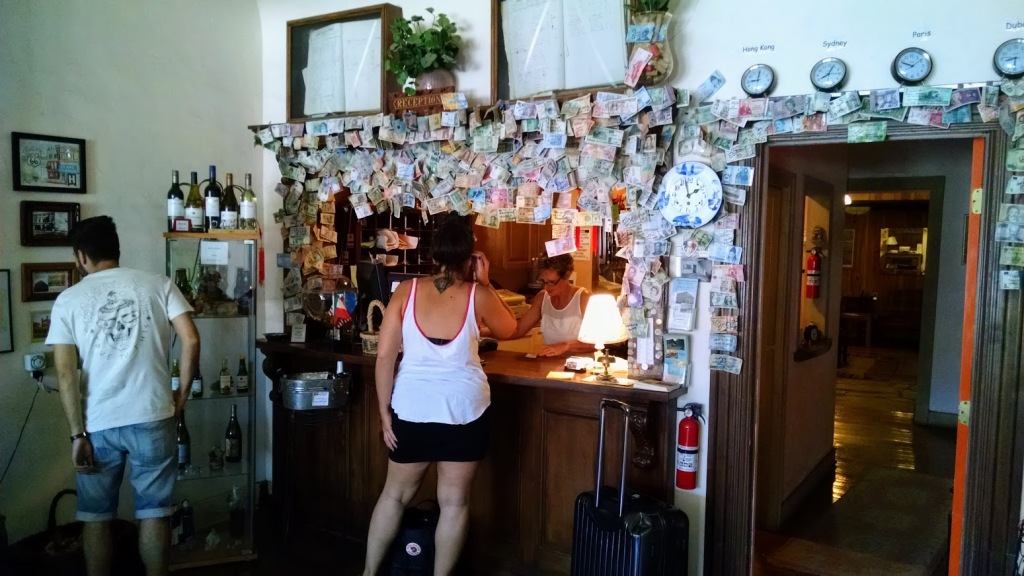
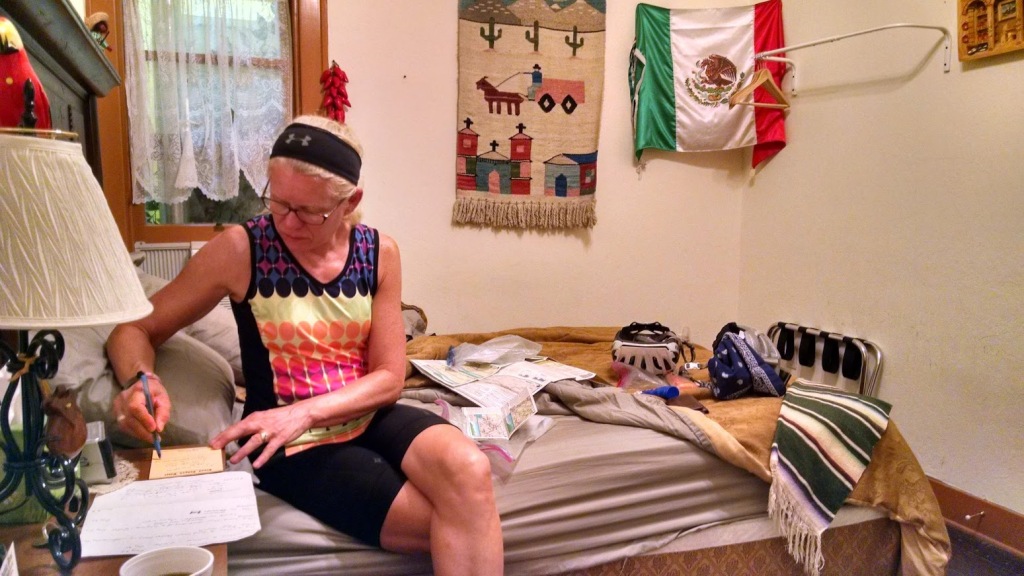
California Dreamin
Peter
We have been back from our nine-day tandem bicycle trip to Montreal, Quebec, Canada for a week now, and the French running through my head is just now starting to fade. This is a good thing too because we are writing our new book, “Bicycling Historic Route 66,” in English. The biking was good, but what we enjoyed most was the culture. The further east we went the “Frencher” it got. When we first entered Canada at Sault Ste. Marie, all of the road signs were in both English and French, and the gas station attendants and waiters at restaurants all spoke both languages. But, by the time we got to our condo in Magog, east of Montreal, all the stop signs simply read, “ARRET.” So much fun!
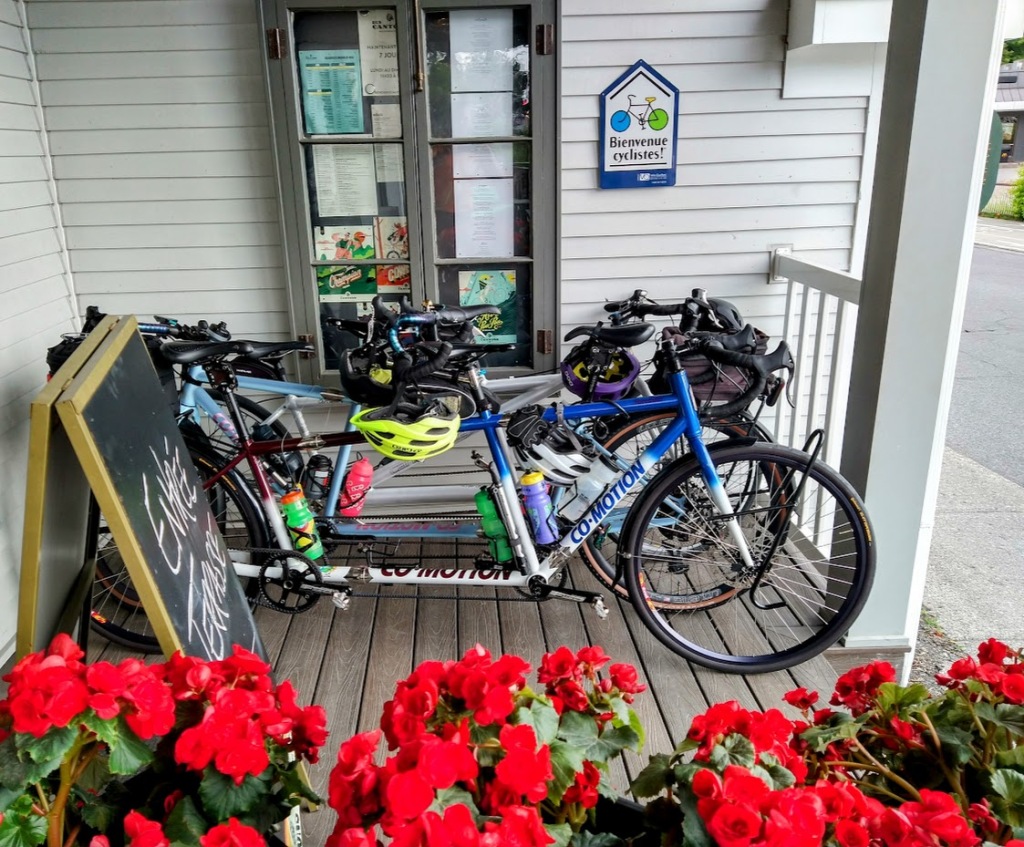
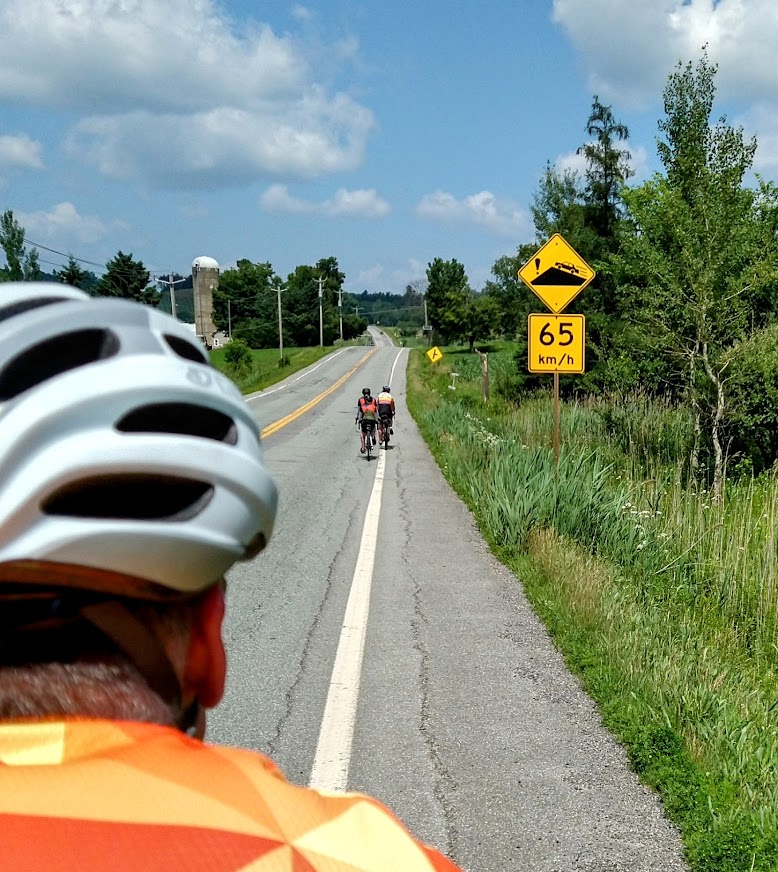
We were traveling with two other tandem teams, one from the Green Bay, Wisconsin area and the other from Eau Claire, Wisconsin. We met a couple of years ago through the COWS (Couples on Wheels) tandem group, we have been friends ever since. We even have a secret handshake (all COWS do).
Traveling with other tandems is a rare joy. While tandems are becoming more popular, they are still uncommon, as are the people who ride them. Not everyone can ride a tandem or wants to. We get a surprising number of inquiries from couples who are considering giving it a try or who have tried it and are looking for tips to get more comfortable. Ultimately, it comes down to the stoker (person in the back) having absolute trust in their captain, and the captain not violating that trust. We often quip that we could easily be the keynote speakers for a marriage counseling seminar.
Bicycling with riders on single bikes is very difficult when you are on a tandem. Comparatively, tandems have a bit of an edge on flat ground. With the power of two and the wind resistance of one, we can usually out pace singles. This is even truer on the downhills. It is common for us to top 45 MPH on descents. Then there are the climbs. Generally speaking, tandems go up hill like a brick. Single riders almost always beat us to the top, and we almost always beat them to the bottom.
Riding with other tandem teams is a special thing and doing it in French made it even better.
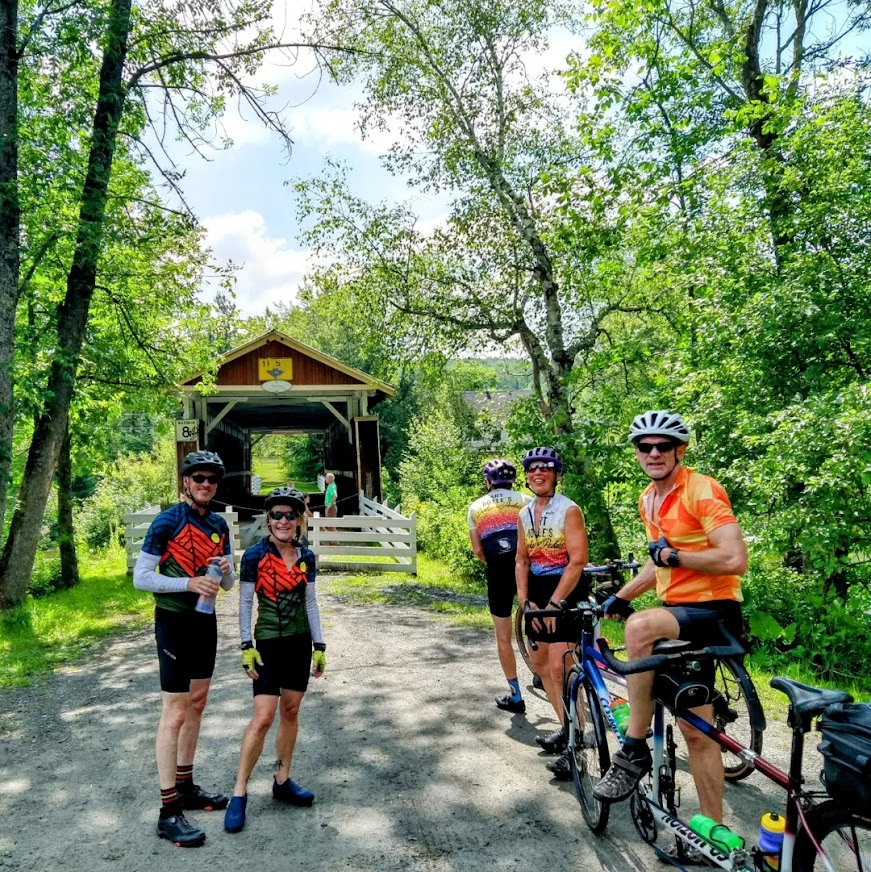
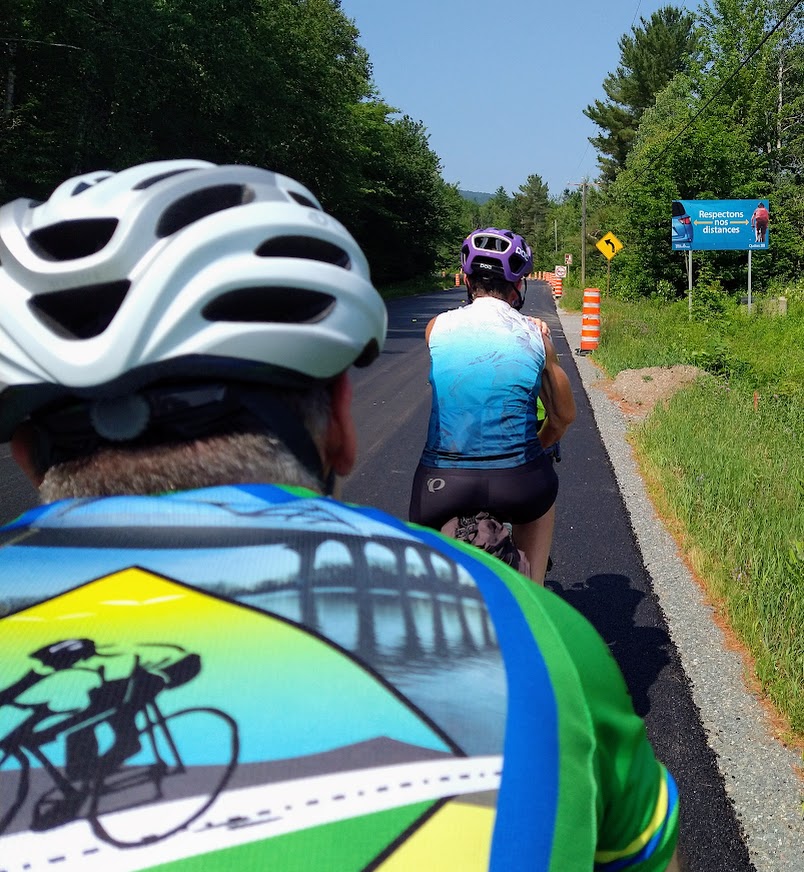
This week we were back in work mode, which not only included work on our book, but meetings as well. On Monday, Tracy chaired a Village of Ashwaubenon Bicycle and Pedestrian Committee meeting. (Tracy founded this committee almost thirty years ago when she was the village’s Parks and Recreation Director.) On Tuesday morning, I attended a quarterly Brown County Traffic Safety Commission meeting where I am the education representative. Tuesday night, Tracy attended a special Village Board meeting. That’s enough meetings for the week.
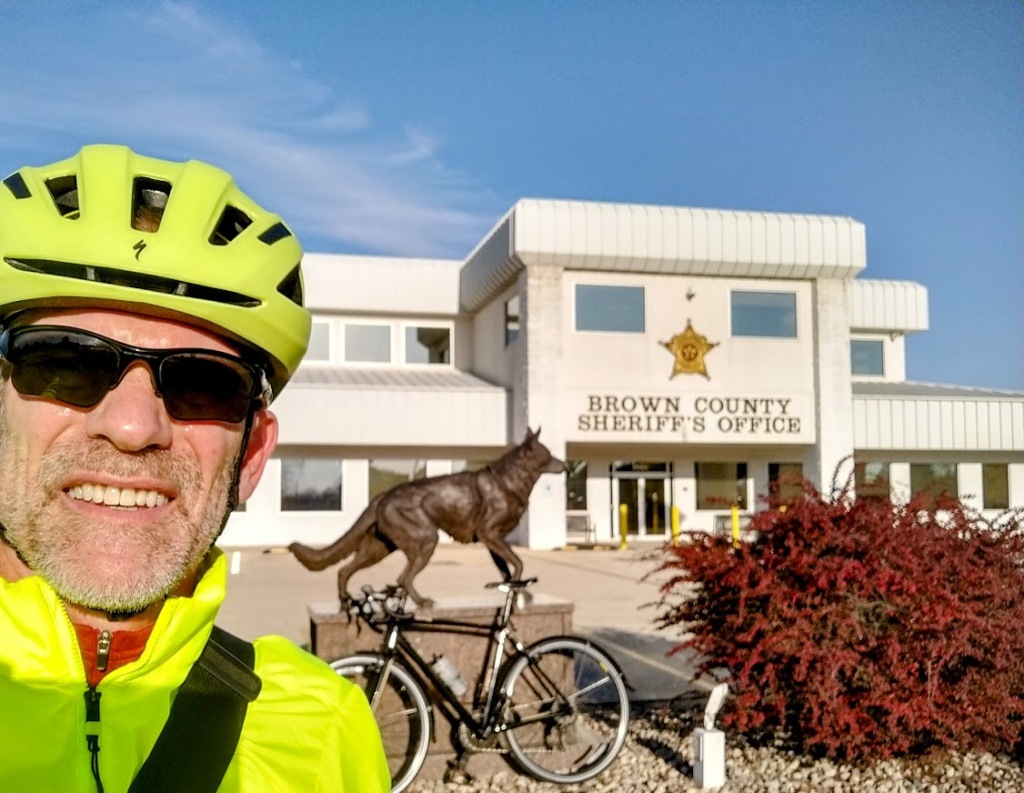
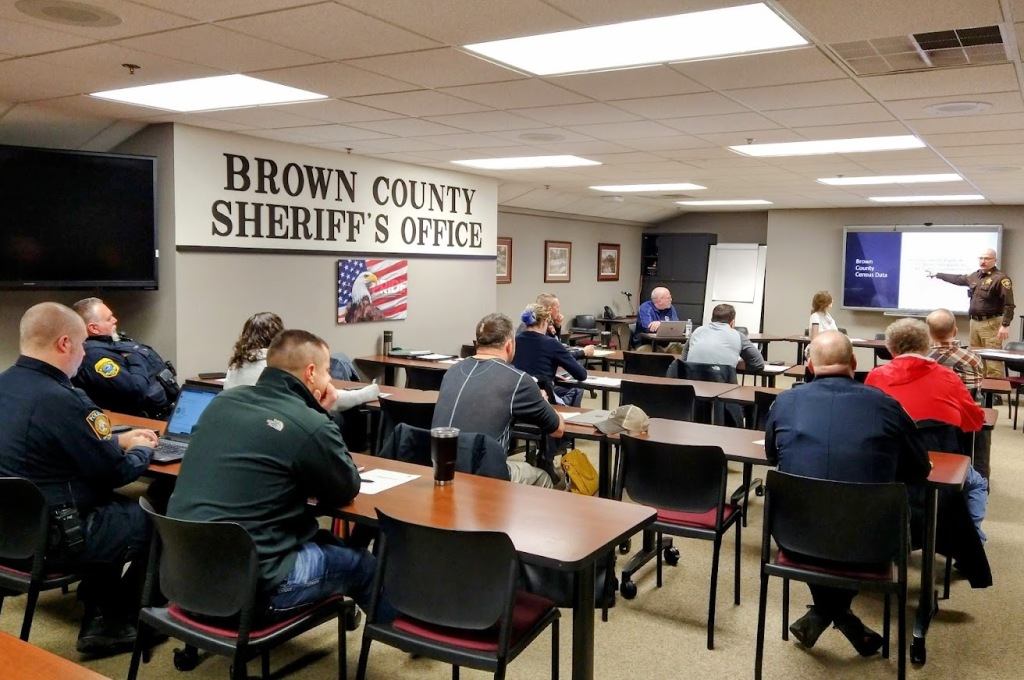
Tracy
Work continues on Chapter 8 – State of Arizona. We have finished day forty-five and only have two days to go until we enter California and Chapter 9 – State of California (the last chapter). Northern Arizona was beautiful, and a bit cooler up in the mountains. Holbrook, Winslow, Flagstaff, Williams, and the Grand Canyon all provided us with wonderful adventures.
We made some new friends and ran into old friends during this part of our trip. We were getting a bit lonesome and these chance and planned encounters helped to keep our spirits up. It truly is a small world.
We are getting closer to the Mohave Desert, which we must cross to get to California. My brother Bill, who had recently motorcycled across the desert with a friend, kept texting me to warn about the heat and difficulty they had crossing the Mohave. He was worried about us.
We did a book signing event for our first book “Coast to Coast on a Tandem” at the Thursday Farmer’s Market /Bosse’s Newsstand in De Pere (Green Bay), Wisconsin. The event was a lot of fun and has gotten us thinking about the book release party for our next book, “Bicycling Historic Route 66”. Stay tuned for more information.

“Motel Du Beau in Flagstaff Arizona was established in 1929 and has been welcoming happy travelers for over 90 years. The initial vision for the Du Beau materialized in the mid 1920’s when Albert Eugene Du Beau (a hotelier of French-Canadian descent), was vacationing in Northern Arizona.” (https://www.modubeau.com/history)
Canada and Book Endorsements
We are on a bicycle trip near Montreal and Quebec, Canada this week with two other tandem couples, but we still are able to get some work done on our new book, “Bicycling Historic Route 66.”
We are headquartered out of Magog, Quebec, 125 kilometers (78miles) east of Montreal and 25 miles north of the USA/Canada border, where we rented a condo. The condo is located near a trail and less than five minutes from the city center.
We rode the hilly countryside during the day and explored the nearby villages which were even smaller than Magog. All of the road signs were in French, which made sense since everyone we met seemed to speak French as their first or only language. It was a challenge ordering at restaurant, cafes and convenience stores, but we did quite well and never felt uncomfortable. In the evening we shared meals at our condo, enjoyed each other’s company, and of course talked bicycling.
Our on last day before heading home we drove two and a half hours east to Quebec City. To avoid the traffic and parking issues in the city we took a ferry across the St. Lawrence Seaway, good idea! We enjoyed exploring the historic city by foot, and sampling the local cuisine, including poutine and crepes.
In our spare time we worked on our book. We outlined the introduction and epilogue, and worked on the last few days of the trip. But the best part was fielding endorsement for the book.
Before we left on our trip we reached out to more than a dozen experts in the bicycling world and asked them if they would endorse the book, and the response has been overwhelming. It is often difficult for potential readers to decide if they want to give a book a try, and endorsements from respected individuals can help with that. We currently have endorsements from the head of a bicycle advocacy organization, a PhD and podcaster in neuroscience, a Route 66 author, a top ten bicycle podcaster, a former newspaper reporter from a small town along Route 66, the executive director of a nonprofit bicycle hospitality organization and endorsements are still coming in. We are truly humbled.
Next week we start the final push to complete our new book, Bicycling Historic Route 66.”
Arizona, Hot, and Windy, But Oh So Beautiful
Tracy
This week we have been putting in extra time on book writing, because we will be on the road next week. On Saturday morning we left Green Bay, Wisconsin for Montreal, Canada with two other tandem couples to explore the area by bicycle. We are excited to spend time with our new friends and bicycle somewhere we have never been. This will also allow our home remolding projects to continue without us in the way. Hopefully the replacement kitchen countertop comes early in the week, and they can finish the kitchen while we are gone.
“A picture is worth a thousand words.”
Our first book included full color photos and we will do this again in our second book. Before we start writing a chapter, we review all the pictures taken during that time span. Going through the pictures is time consuming, but fun and frequently triggers a memory that should be included in the book. After the review we send the selected photos to our editor for possible inclusion in the book. We have many pictures from our bicycle trips to choose from, Peter is really good about taking them. It is especially annoying when he insists on taking a picture during a particularly tough time. But I must admit, those are frequently the best pictures. Our editor now has the pictures for the last two chapters of the book.
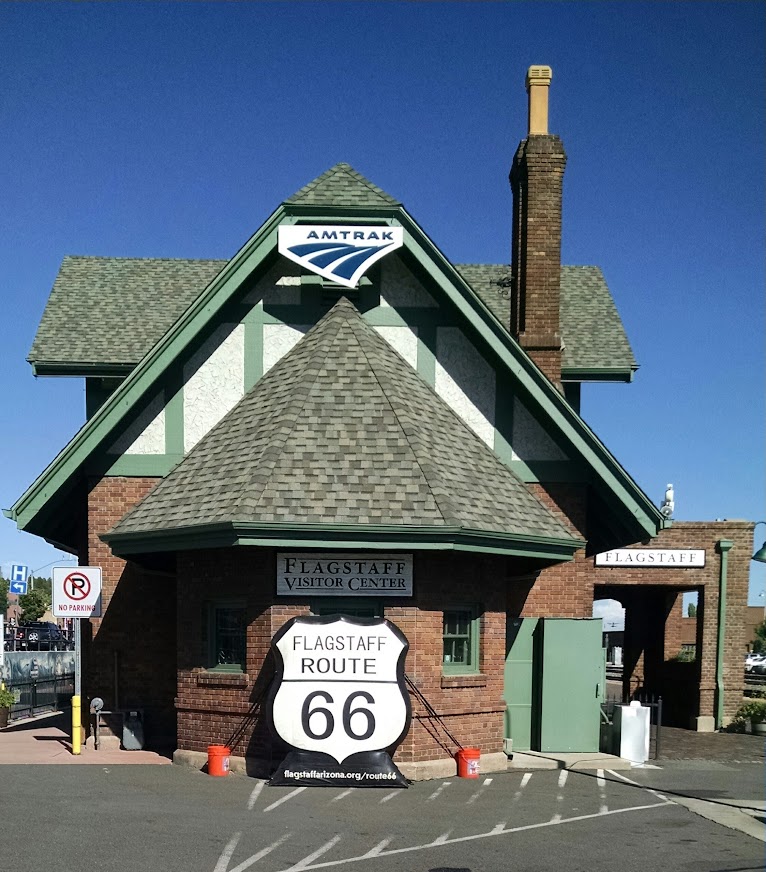
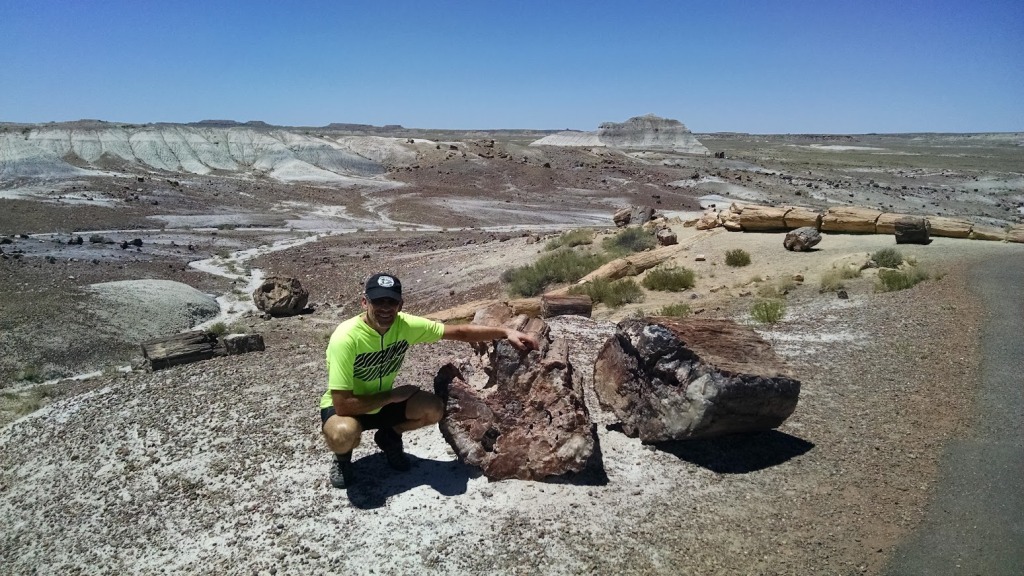
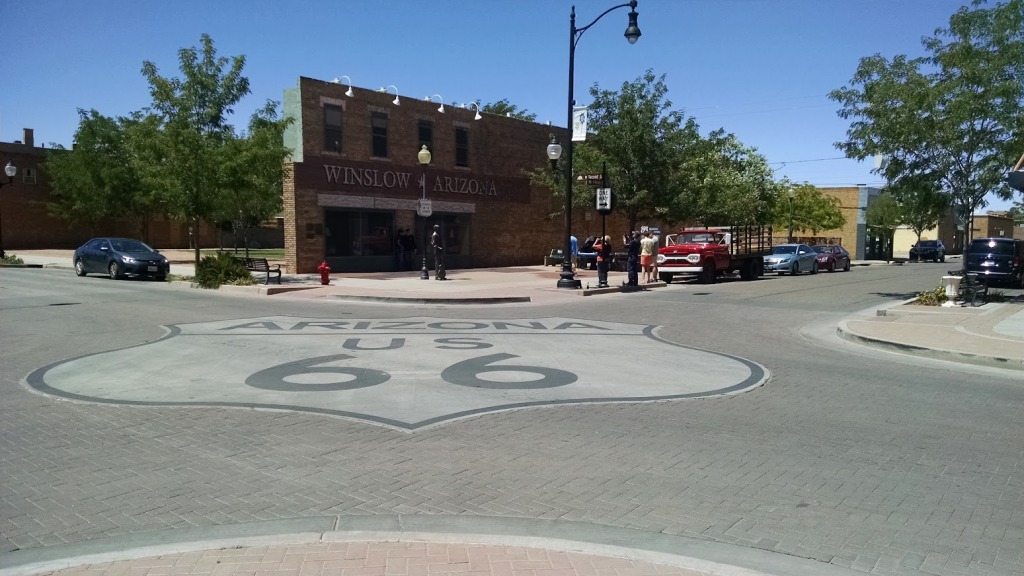
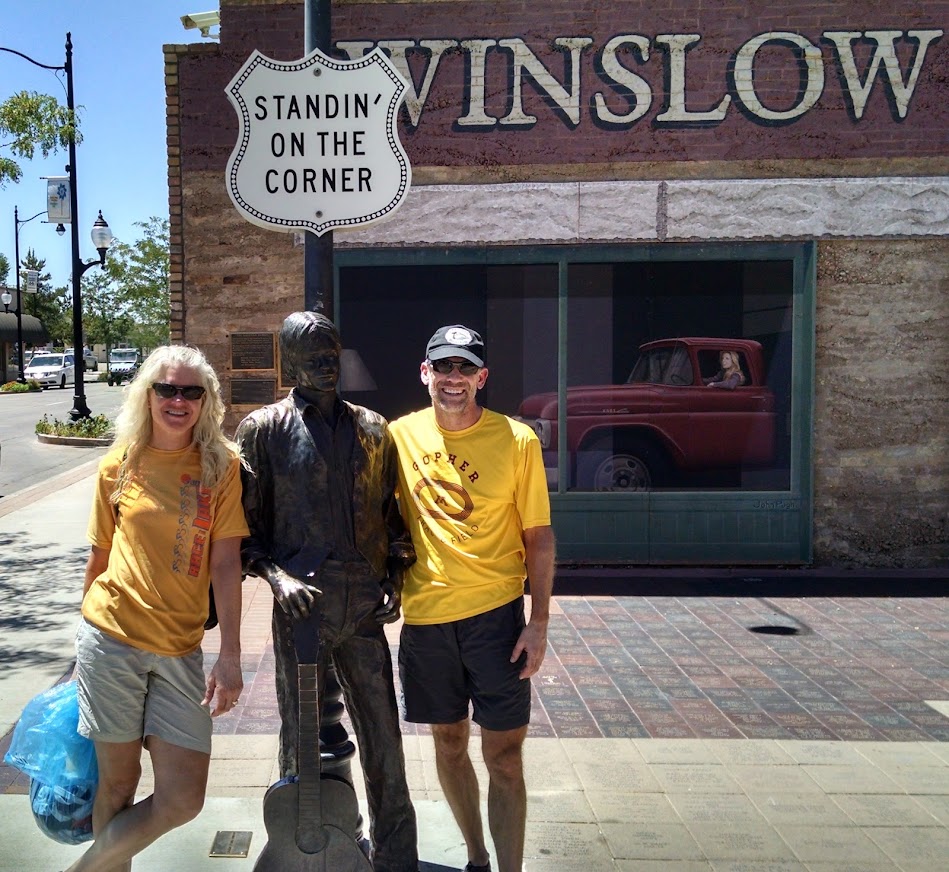
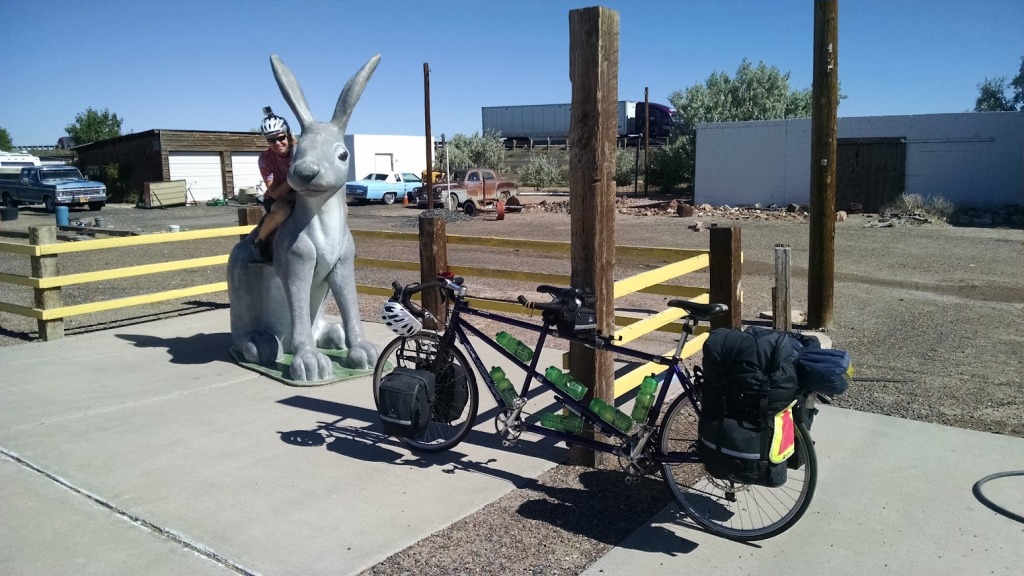
Peter
The State of Arizona took us nine days to bicycle across, and this will be another long chapter to write. We created a task list last weekend and set a goal of completing four days in Arizona before we left on our trip to Montreal. I am proud to say we completed the first four days (Gallup, New Mexico to Chambers, Arizona, Chambers to Holbrook, Holbrook to Winslow, and Winslow to Flagstaff). Yeah! Now it is time for a day off in Flagstaff to explore the area with a good friend and a week off from writing to explore Montreal with friends. Perfect timing.
Video:

Wigwam Village Motel #6 in Holbrook, Arizona
“In the arid Arizona desert, the Wigwam Village Motel in Holbrook still stands.
While passing through Cave City, Kentucky in 1938, Chester E. Lewis was impressed by the distinctive design of the original Wigwam Village constructed in 1937 by architect Frank Redford. An astute observer will see that the Wigwam Village is not composed of wigwams but of teepees. Mr. Redford, who patented the wigwam village design in 1936, disliked the word ‘teepee’ and ignoring cultural accuracy used ‘wigwam’ instead.
Mr. Lewis purchased copies of the plans and the right to use the Wigwam Village name. The purchase included a royalty agreement in which Mr. Lewis would install coin operated radios, and every dime inserted for 30 minutes of play would be sent to Mr. Redford as payment. Seven Wigwam Villages were constructed between 1936 and the 1950s. Finished in 1950, Mr. Lewis’ village was the sixth, thus its designation as Wigwam Village #6.
Fifteen concrete and steel freestanding teepees are arranged in a semi-circle around the main office. The motel office and its surrounding small buildings represent the quarters of the chief and his family. Each teepee is 21 feet wide at the base and 28 feet high. The teepees are painted white with a red zigzag above the doorway. Rooms feature the original hand-made hickory furniture, and each is equipped with a sink, toilet, and shower. Vintage automobiles are permanently parked throughout the property, including a Studebaker that belonged to Mr. Lewis. In front of the main office were gas pumps that are no longer in place.
Mr. Lewis successfully operated the motel until Interstate 40 bypassed downtown Holbrook in the late-1970s. Mr. Lewis sold the business, and it remained open, but only to sell gas. Two years after Mr. Lewis’ death, his wife and grown children re-purchased the property and reopened the motel in 1988. They removed the gas pumps and converted part of the main office into a museum, which is open to the public. The museum holds Mr. Lewis’ own collection of American Indian artifacts, Civil War memorabilia, Route 66 collectibles, and a petrified wood collection. Wigwam Village Motel #6 was listed in the National Register of Historic Places in 2002. In 2003 and 2007, the motel received Cost-Share Grants from the National Park Service Route 66 Corridor Preservation Program. Of the seven original Wigwam Village Motels, two other Wigwam Village Motels survive: #2 in Cave City, Kentucky and #7 in Rialto/San Bernardino, California.
Wigwam Village Motel #6 is located at 811 West Hopi Dr. in Holbrook, AZ.”
https://www.nps.gov/places/wigwam-village-motel-6.htm
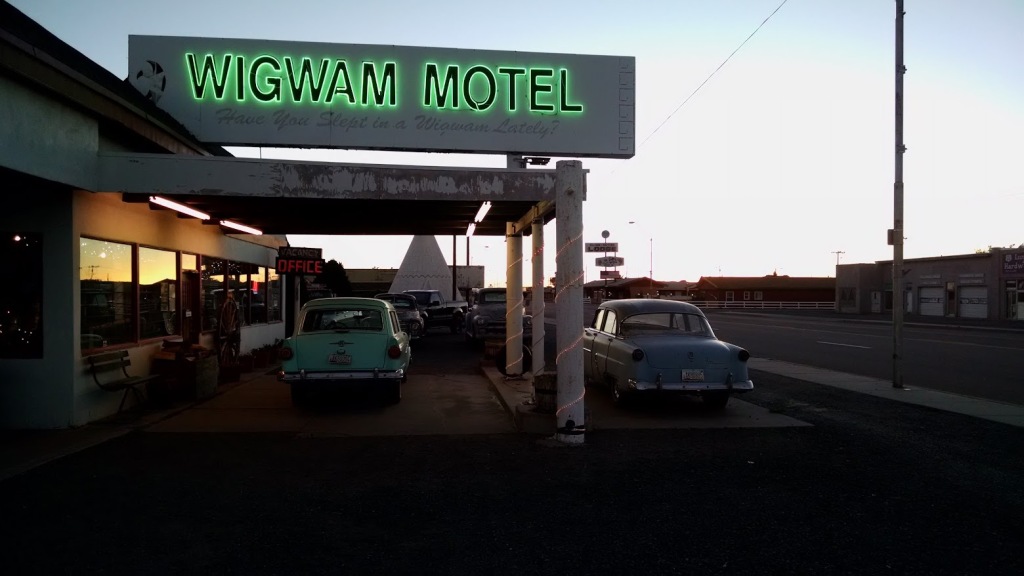
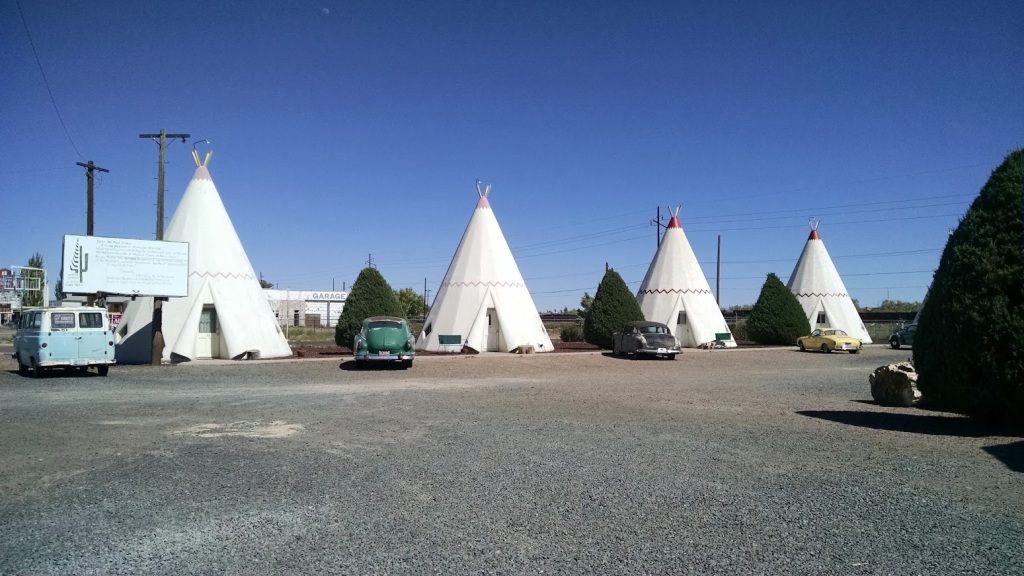
Arizona Here We Come!
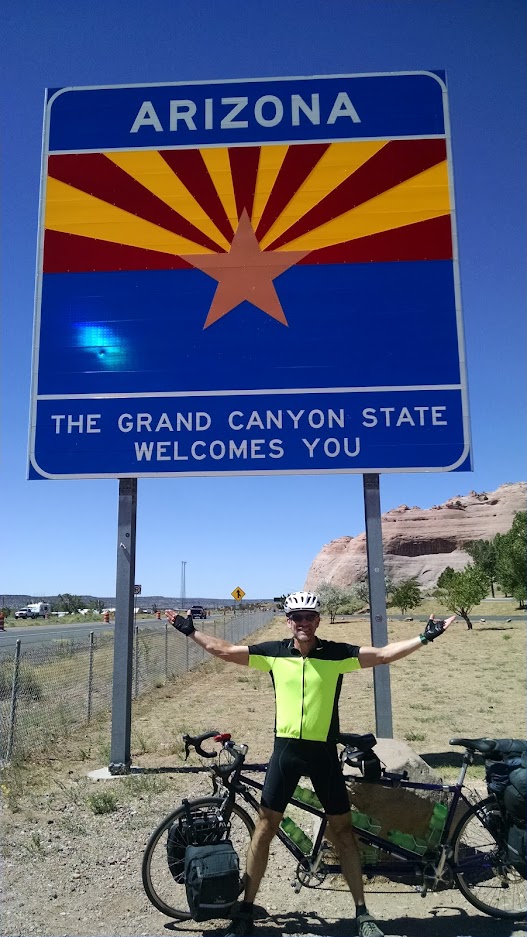
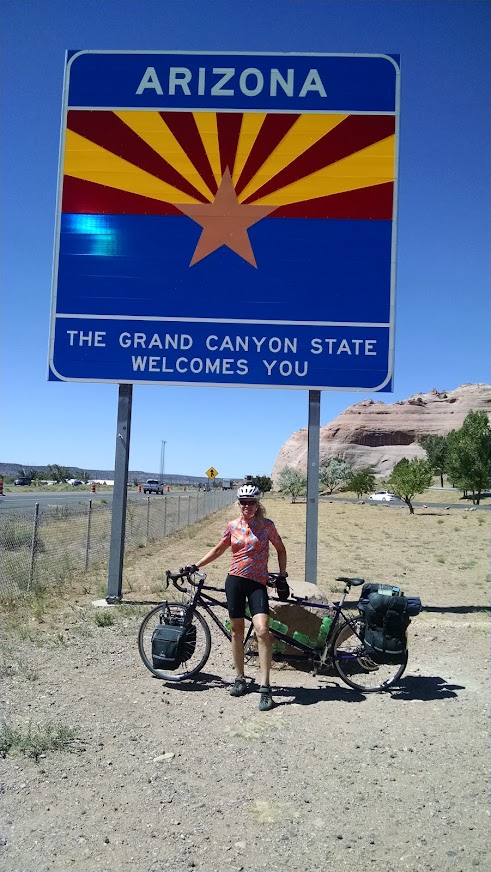
Peter
It feels really good to be back writing our next book, “Bicycling Historic Route 66.” I have been surprised by how much I have missed it. Work, two home remodeling projects, travel, and life in general, have all seemingly conspired to keep me away from writing for the past several weeks, and I have felt a bit off without it. I have come a long way baby.
When I was in elementary school, I would have done anything to avoid reading and writing. The words did not come as easily to me as they did to the other kids. I was afraid to read in public. I survived because of my athleticism and verbal skills, but I was behind. If it had not been for that force of nature who is my mother, I am not sure I would have ever learned to read. I am still a slow reader, but I love to read. I will never be able to fully express the pride I feel to this day when I am able to read out loud in public or express my thoughts, ideas, and feelings through writing.
One of the proudest days of my life was when I presented my mother with a signed copy of our first book, “Coast to Coast on a Tandem,” and I cannot wait to do the same with this book.
Tracy
I spent a few days this week in Wauwatosa, a suburb near Milwaukee, Wisconsin, with my parents. We wrote our first book, “Coast to Coast on a Tandem” in 2017. I, of course, gave a signed copy to my parents. My mother was so proud and read the book immediately. She loved it and was excited that she was in it. For years, she would buy more copies to give to her friends. I lost track of how many she bought! Unfortunately, my mom now has dementia and does not remember reading the book or even that we wrote one. My dad, on the other hand, has never read our book, and he is a voracious reader. I have asked him about it several times and even tease him that it would be great if he read it before he died. Peter thinks it might just be to emotional for him to read it, he is that proud of me. Peter suggested that I try reading sections of the book to my mom and dad. So, I tried it. Mom and I were sitting on the couch, and I asked her if she wanted to hear the chapter she was in. Of course she did. As I was reading, dad walked into the room and took a seat to listen. We talked about the section I read and he remembered it fondly. We then discussed what happened next and other parts of the book. He eventually took the book and told me he guessed he needed to read it, and proceeded to read the prologue. He looked at me when he was done and said it was good, and that he was excited to read the rest. We will see! Hopefully, he will not take so long to read our next book, he would be 95 by then. (Ha-Ha)
Book Writing Update
Peter
We are starting to see the light at the end of the tunnel with “Bicycling Historic Route 66.” Today we entered the great state of Arizona (Chapter 8) which took us nine days to cross. (We must have been pretty excited because we shot four GoPro videos that day. See below.) Arizona is stunningly beautiful, but both the heat and headwinds are building. Will we make it?
California (Chapter 9), our final state, and the Pacific Ocean are next. Once this chapter is done and off to the editor, we will circle back and write the introduction, making sure it ties the Preface and Chapter 1 – State of Wisconsin together, and the Postscript. The postscript will take us from the end of Route 66 on Santa Monica pier to our home here in Green Bay, Wisconsin. From there, we will briefly walk readers through the personal and bicycling highlights (and lowlights) of the next several years that brought us to the point of writing this book. Hang on, it has continued to be quite a ride.
Other tasks that need to be completed include:
-Edit Chapters, 7-9, Preface, Introduction, and Postscript (Editor)
-Book design for Chapters 5-9, Preface, Introduction, and Postscript (Publisher)
-Write our dedications (Tracy and Peter)
-Secure book endorsements (Tracy and Peter) (Let us know if you have any suggestions.)
-Obtain photo waivers (Tracy and Peter)
-Get book ISBN number (Publisher)(“An ISBN, or International Standard Book Number, is a unique number that is assigned to every published book. An ISBN identifies a book’s edition, publisher, and physical properties like trim size, page count, and binding type. An ISBN allows retailers, libraries, and distributors to efficiently search for books.” https://kdp.amazon.com/)
-Back cover design (Publisher)
-Secure printer and print book (Publisher)
-Ramp up marketing (Tracy and Peter)
-And whatever else we have forgotten (Tracy, Peter, and Publisher)
-Share the book with the world (Tracy and Peter)
Clearly, we have some work ahead of us yet, but the light is getting brighter. Thank you for all of your support!
Video(s):

“La Posada embodies the visions of both Mary Elizabeth Jane Colter, the hotel’s renowned architect, and Allan Affeldt, its current owner. But the story really begins with Fred Harvey, who “civilized the west” by introducing linen, silverware, china, crystal, and impeccable service to railroad travel. (He was so legendary that MGM made a movie called The Harvey Girls starring Judy Garland.) Harvey developed and ran all the hotels and restaurants of the Santa Fe Railway, eventually controlling a hospitality empire that spanned the continent.
In the 1920s, Harvey decided to build a major hotel in the center of northern Arizona. “La Posada”—the Resting Place—was to be the finest in the Southwest. Construction costs alone exceeded $1 million in 1929. Total budget with grounds and furnishings was rumored at $2 million (about $40 million in today’s dollars). They chose Winslow, then (as now) the Arizona headquarters for the Santa Fe Railway. Winslow was ideally situated for a resort hotel since everything to see and do in northern Arizona is a comfortable day’s drive. They asked Colter to design the new hotel.
Colter worked for the Fred Harvey Company from 1905 until her retirement in the 1950s. Although famous for her magnificent buildings at the Grand Canyon, she considered La Posada her masterpiece. Here she was able to design or select everything from the structures to the landscape, furniture, maids’ costumes, and dinner china. Many people consider this the most important and most beautiful building in the Southwest.
After Its Heyday: La Posada’s Fate
La Posada opened May 15, 1930, just after the stock market crash of 1929, and remained open for just 27 years. In 1957, the hotel closed to the public. The museum-quality furnishings were auctioned off in 1959. In the early 1960s, much of the building was gutted and transformed into offices for the Santa Fe Railway. Several times over the ensuing 40 years, the building was nearly demolished, as recently as 1994 when the railway announced its plans to move out for good.
Saving a National Treasure
The National Trust for Historic Preservation found out about La Posada’s peril and added it to their endangered list — where it came to the attention of Allan Affeldt. But La Posada was never for sale. Allan Affeldt purchased it from the Santa Fe Railway after learning that the property was in danger. He visited the hotel in 1994 and decided to help local preservationists save it. This daunting task entailed negotiating for 3 years with the railroad and resolving various legal, environmental, and financial obstacles. He established La Posada LLC to take on the enormous risk and complexity of the estimated $12 million restoration. Allan and his wife Tina Mion moved in April 1, 1997. Daniel Lutzick became the third partner and General Manager.
Although none of the partners is a hotelier by training, they have accomplished what once seemed impossible transforming a forgotten but magical place into a living museum. Allan oversees the overall rehabilitation—design, architecture, financing, and planning. Tina, a renowned artist, paints in her studio upstairs; her art is now an integral part of La Posada experience. Dan, a sculptor, maintains day-to-day operations of the hotel as general manager and coordinates exhibits and events. The president of the Winslow Arts Trust, he operates Snowdrift Art Space down the street at 108 West 2nd.
The property has had its share of famous guests including James Cagney, Franklin D. Roosevelt, Jimmy Stewart, Roy Rogers, Carole Lombard, Amelia Earhart and John Wayne.
History

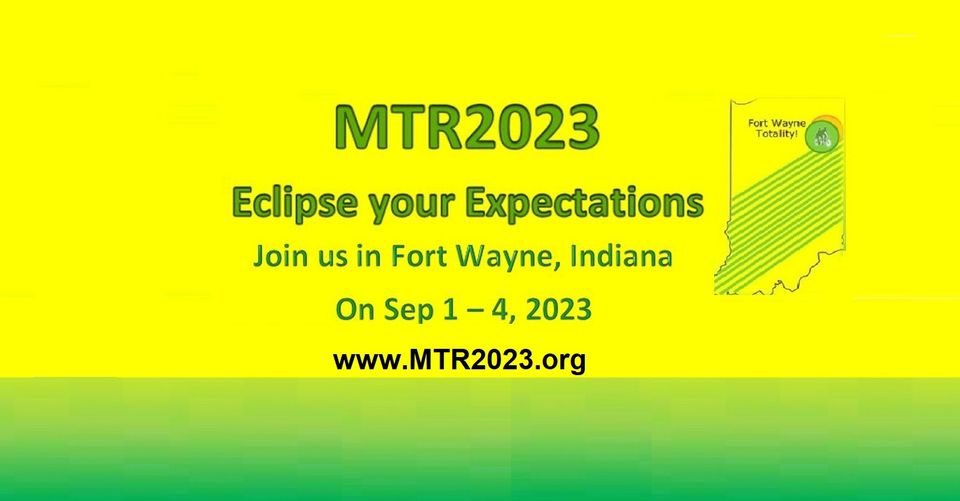
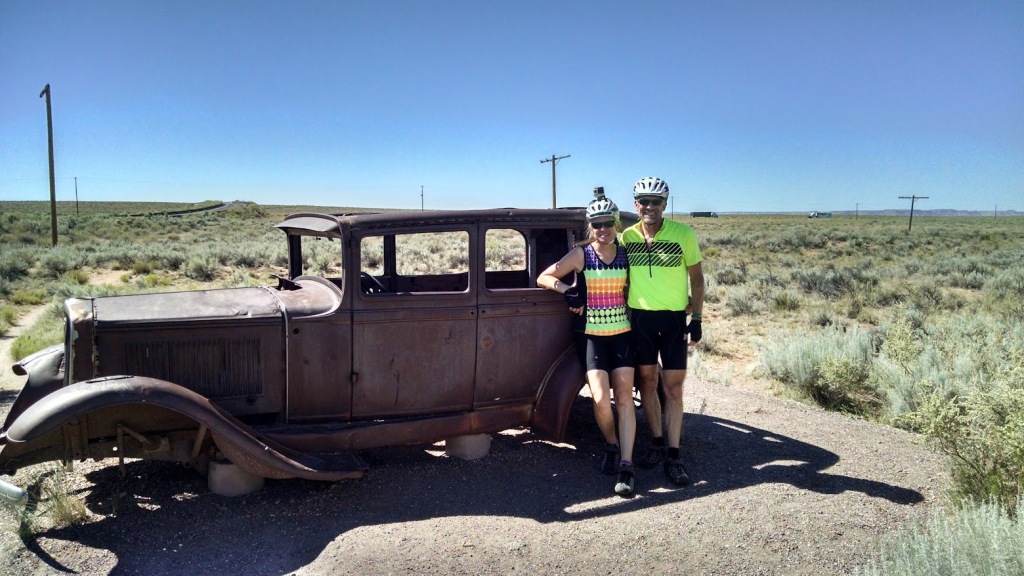
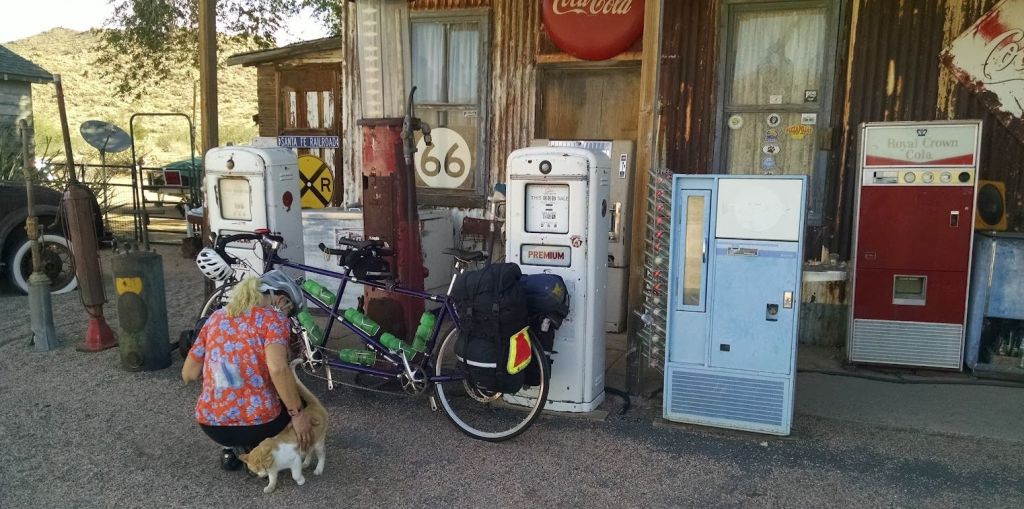
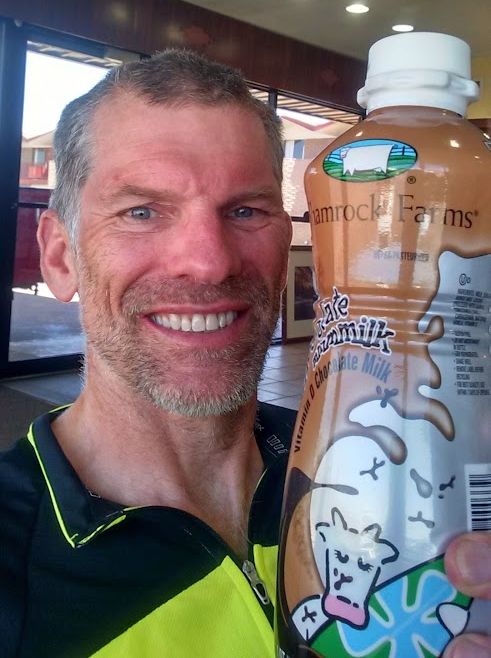
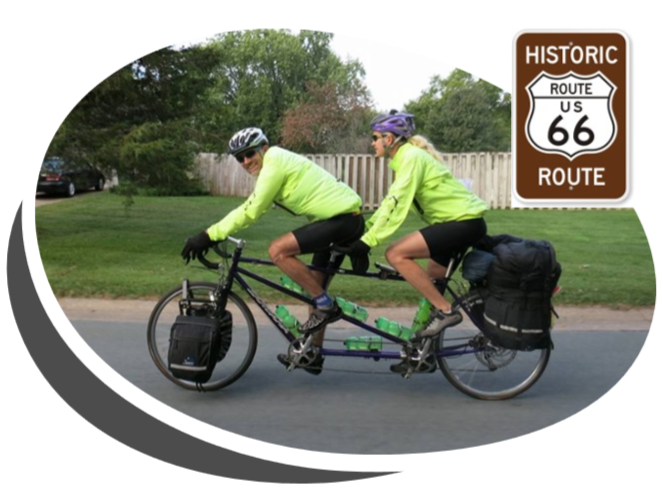
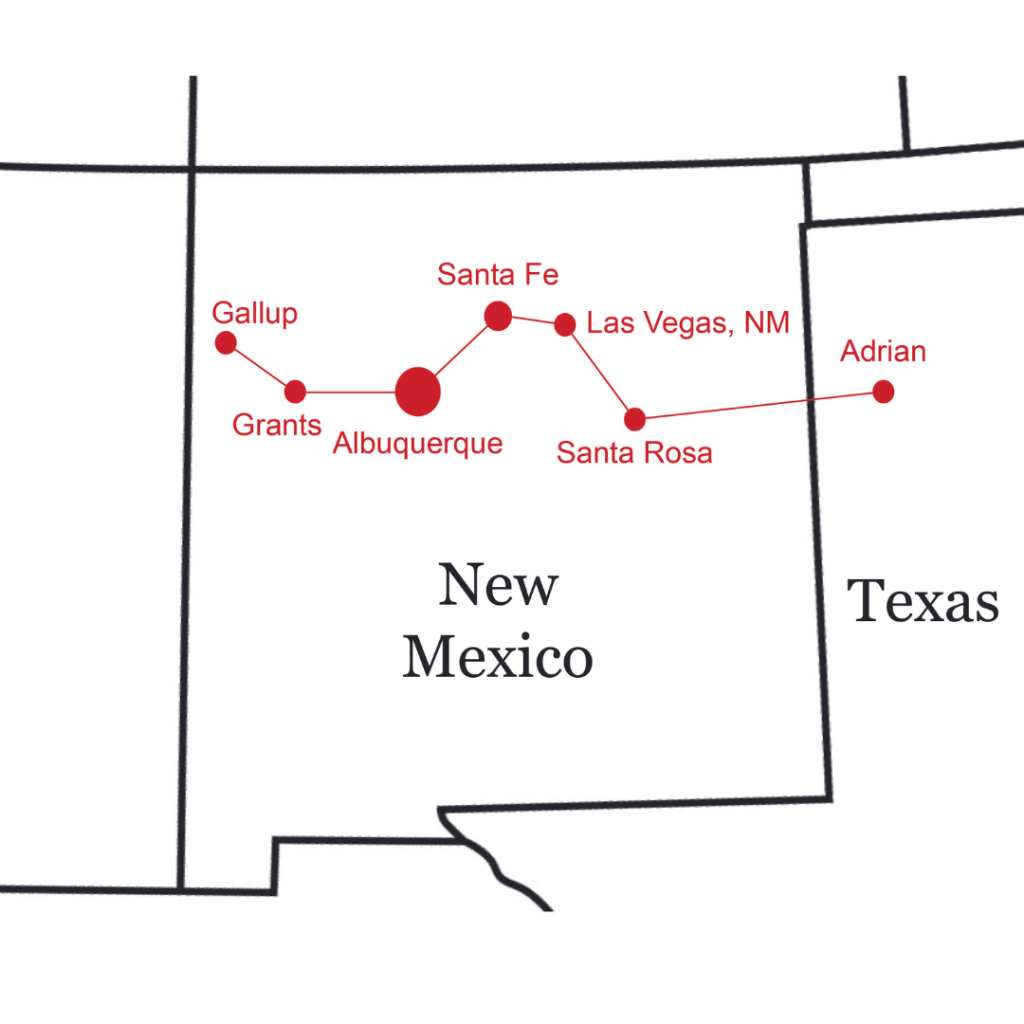
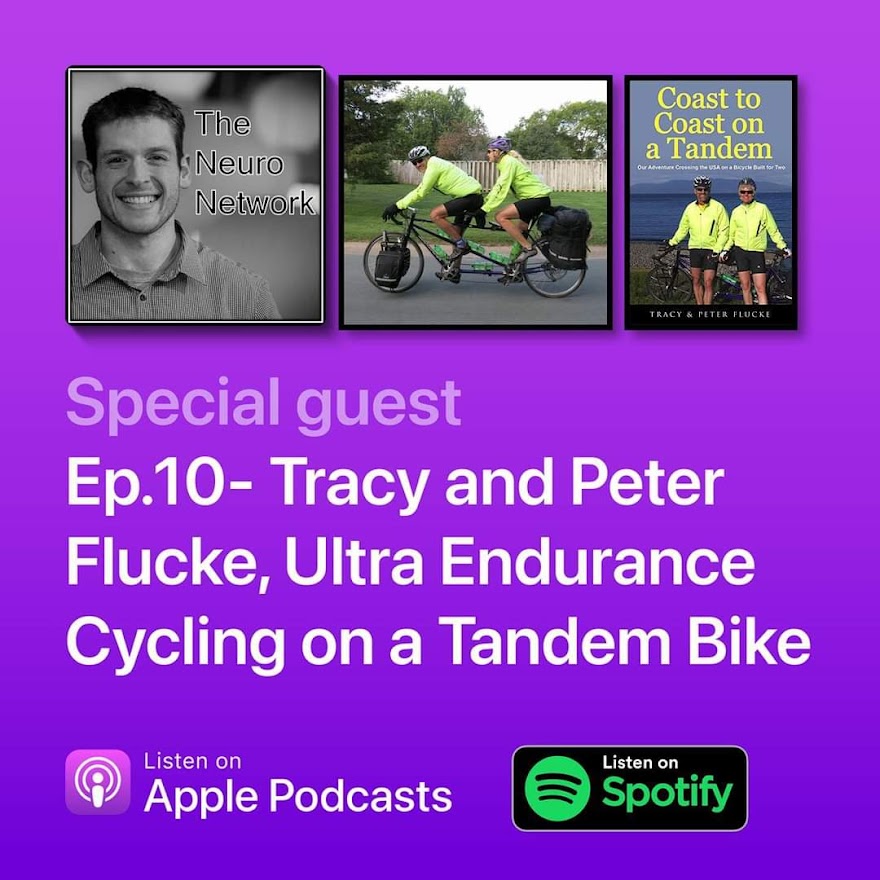
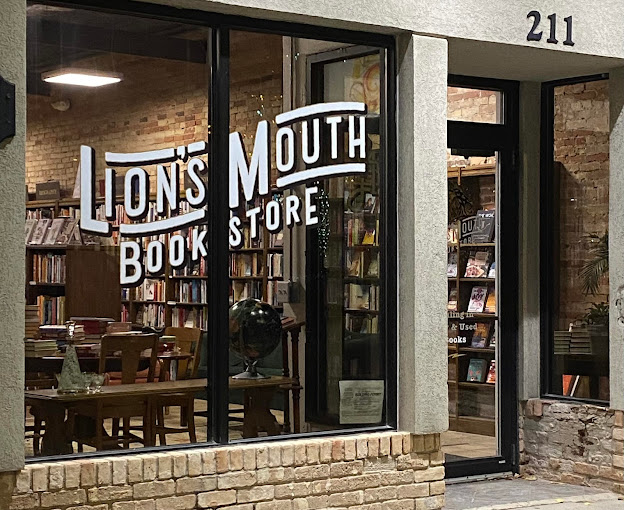
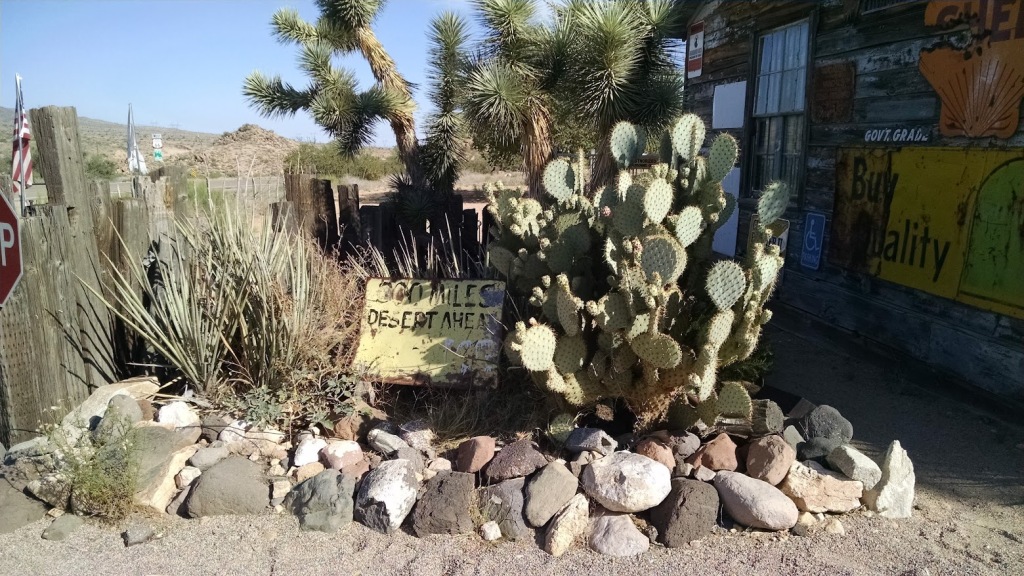
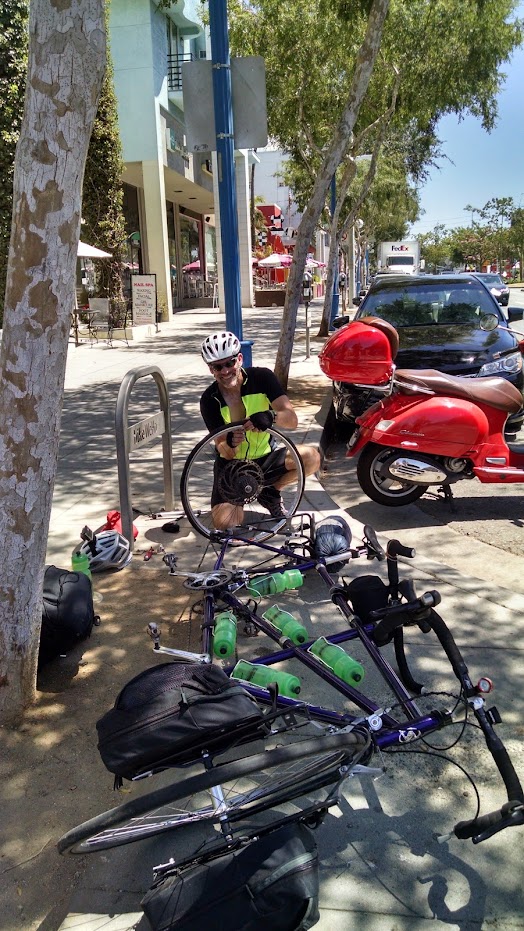
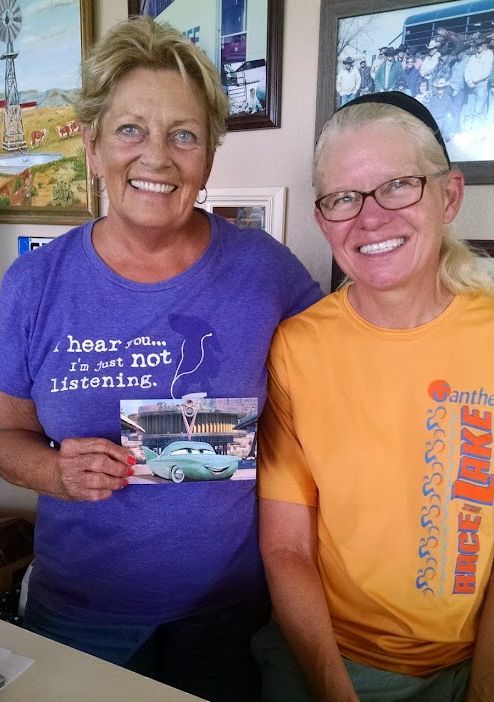

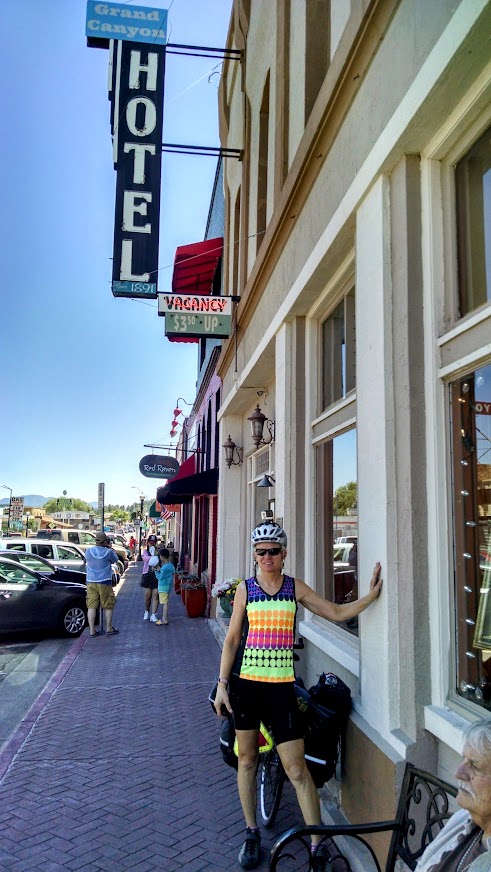
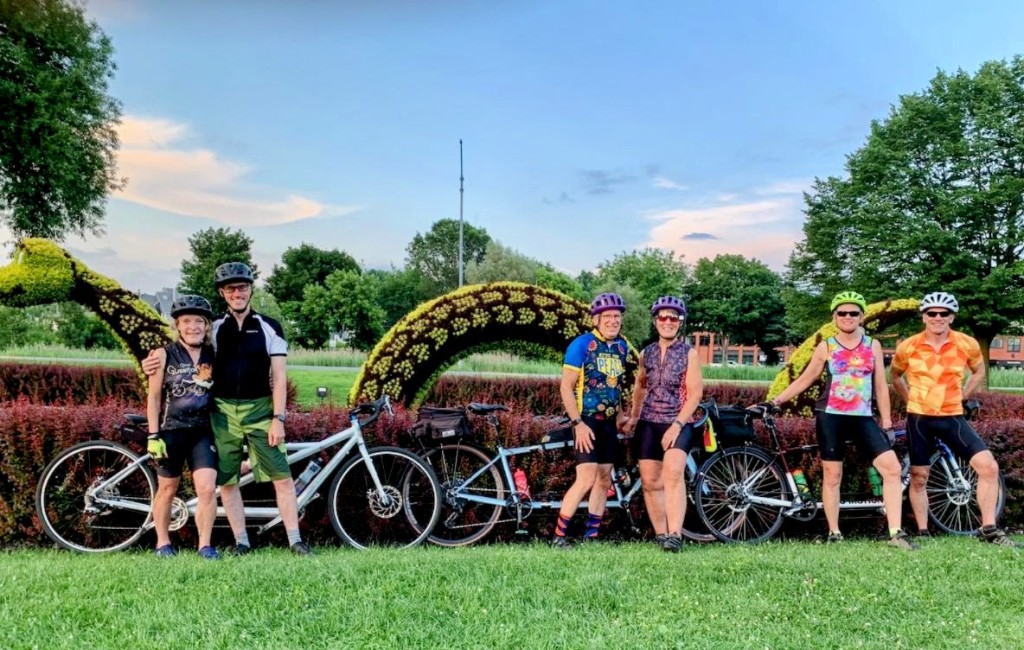
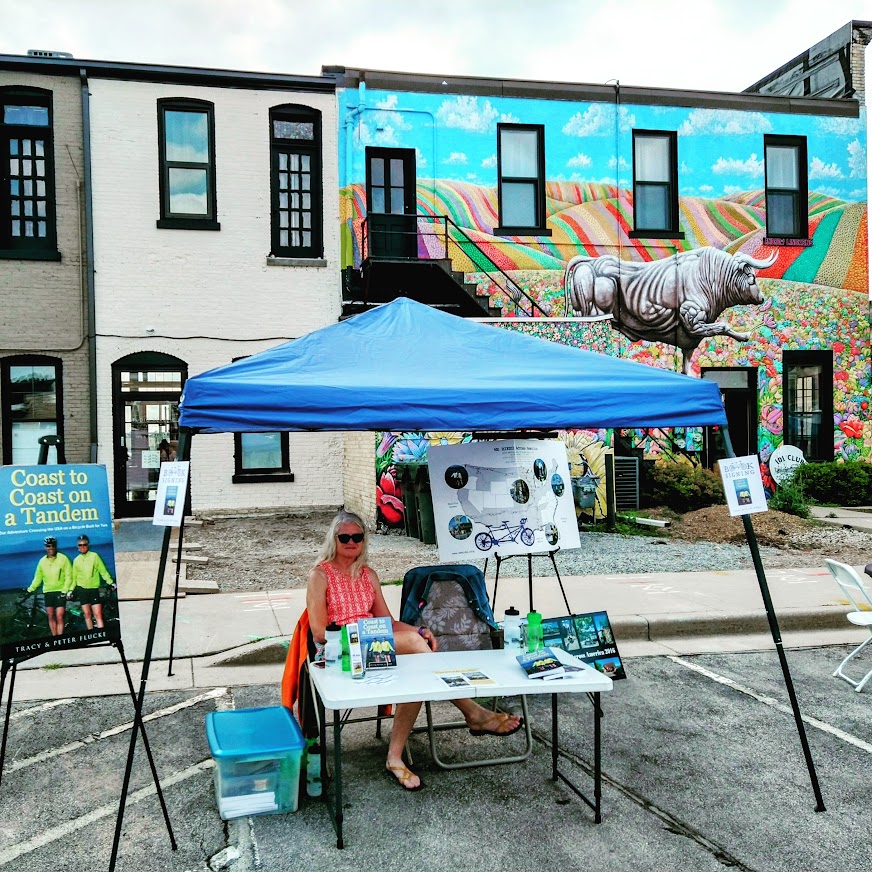
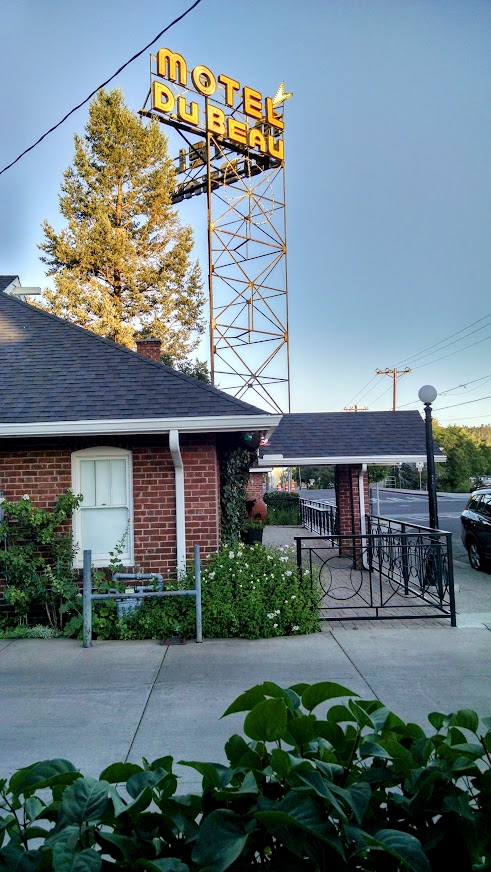
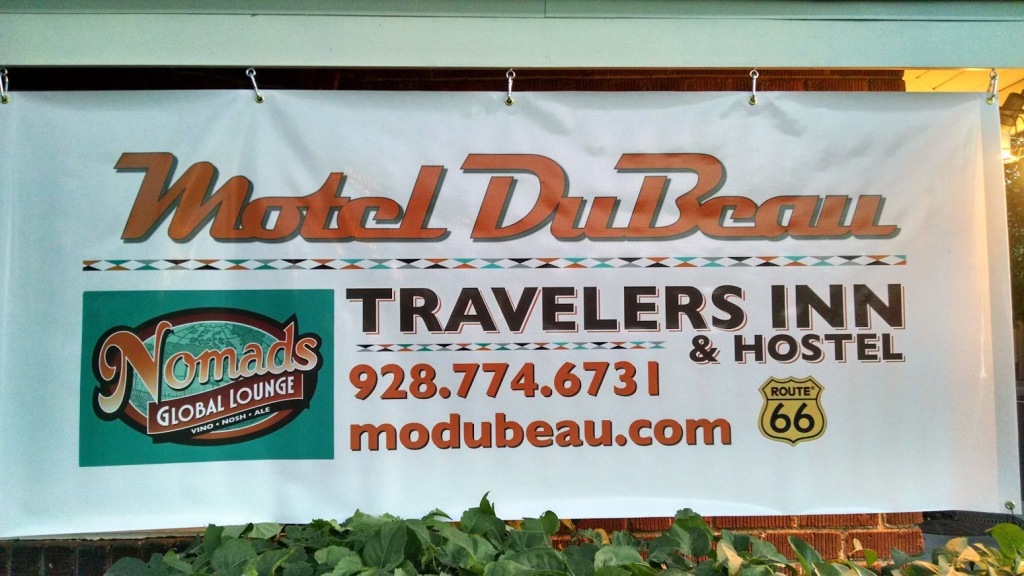
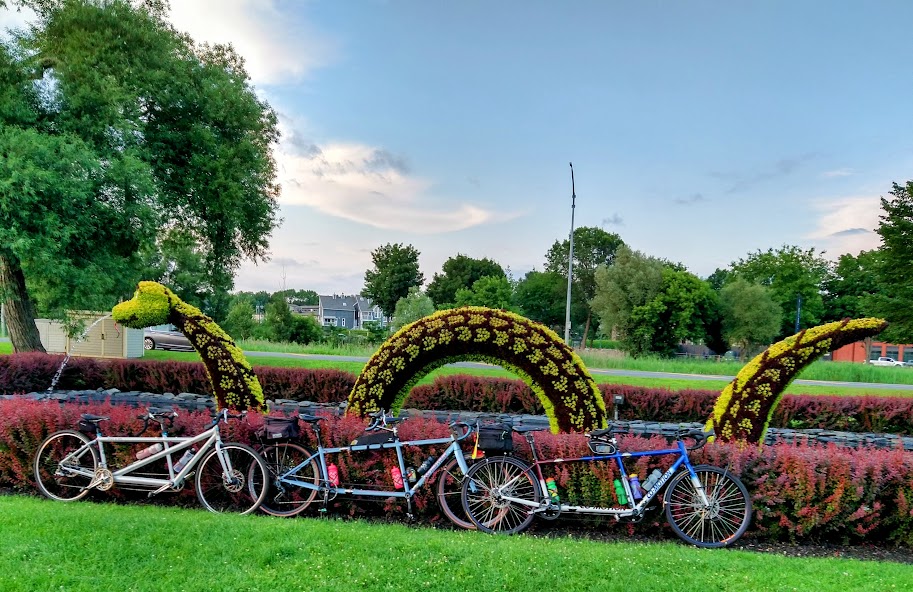
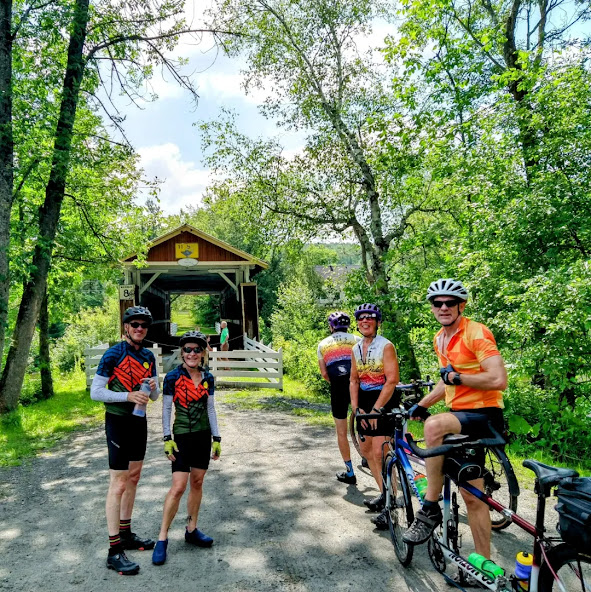
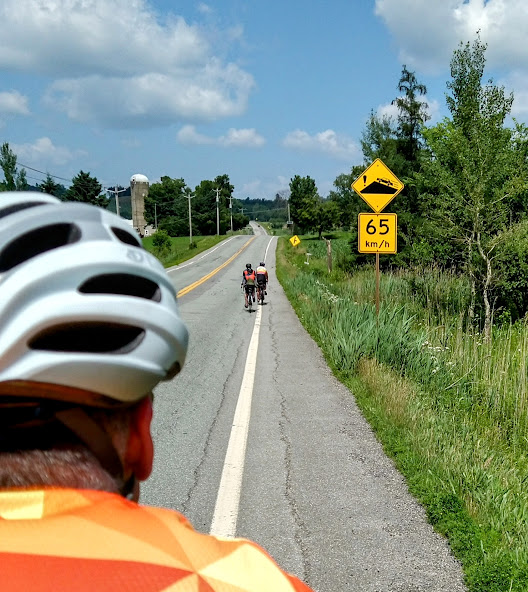
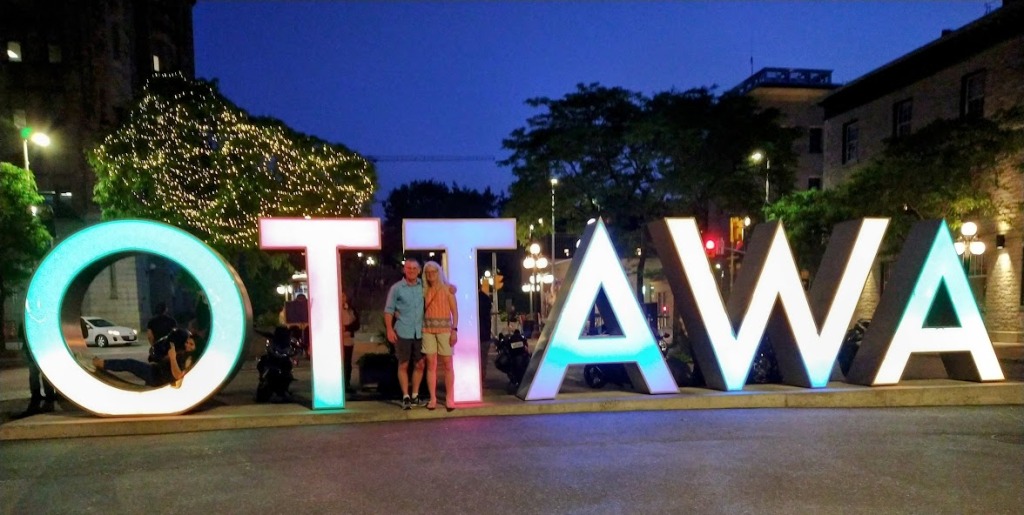
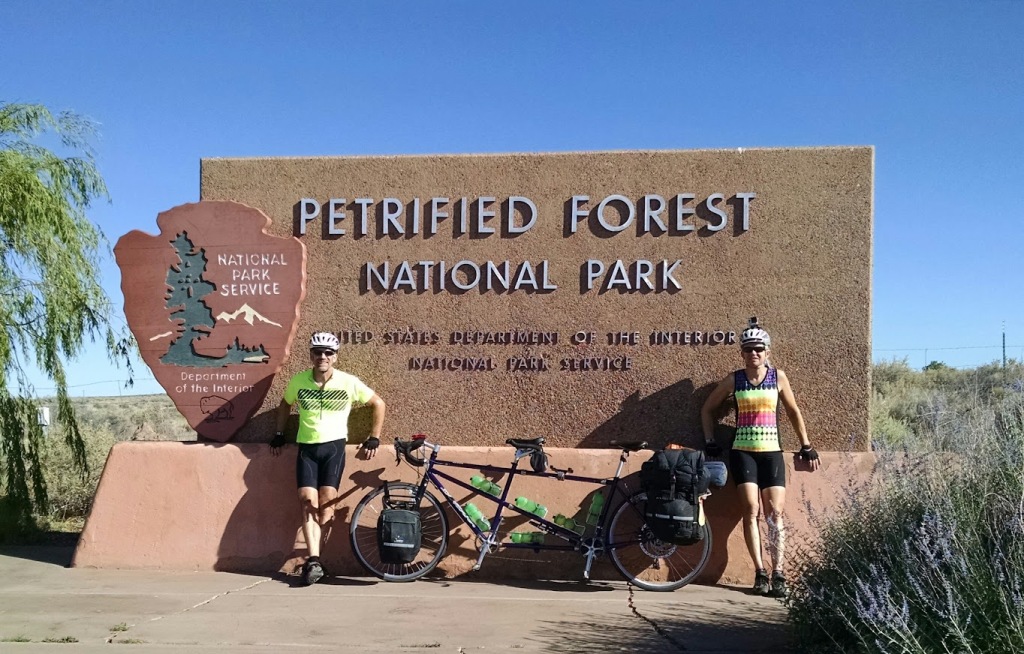
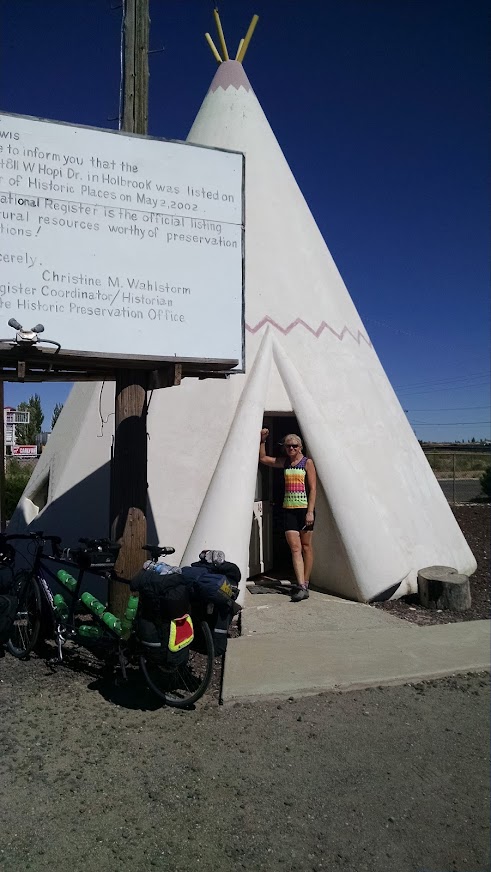
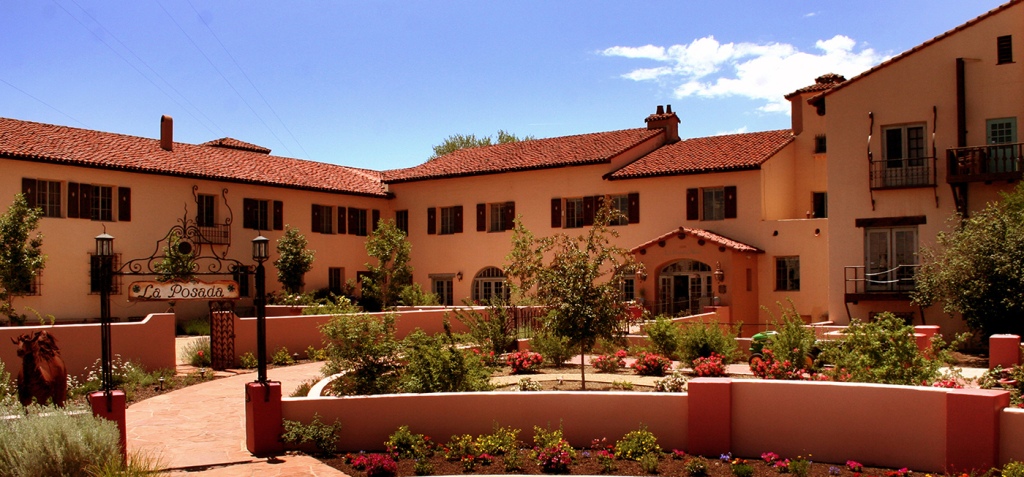

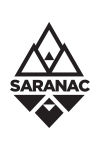




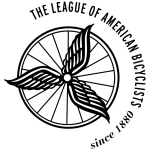
Recent Comments